The Rough Guide to Yorkshire
4.3, 4 reviews
Practical travel guide to Yorkshire with a free eBook featuring points-of-interest structured lists of all sights and off-the-beaten-track treasures, with detailed colour-coded maps, practical details about what to see and to do in Yorkshire. The Rough Guide to Yorkshire also includes details on how to get there and around, pre-departure information, as well as top time-saving tips, like a visual list of things not to miss in Yorkshire, expert author picks and itineraries to help you plan your trip. This guide book has been fully updated post-COVID-19.
The Rough Guide to Yorkshire covers: South Yorkshire; West Yorkshire; The Vale of York; The Yorkshire Dales; The North York Moors; East Riding of Yorkshire.
Inside this travel guide you'll find:
RECOMMENDATIONS FOR EVERY TYPE OF TRAVELLER
Experiences selected for every kind of trip to Yorkshire, from off-the-beaten-track adventures in Whitby to family activities in child-friendly places, like Spurn Head or chilled-out breaks in popular tourist areas, like Robin Hood's Bay.
PRACTICAL TRAVEL TIPS
Essential pre-departure information including Yorkshire entry requirements, getting around, health information, travelling with children, sports and outdoor activities, food and drink, festivals, culture and etiquette, shopping, tips for travellers with disabilities and more.
TIME-SAVING ITINERARIES
Carefully planned routes covering the best of Yorkshire give a taste of the richness and diversity of the destination, and have been created for different time frames or types of trip.
DETAILED REGIONAL COVERAGE
Clear structure within each sightseeing chapter includes regional highlights, brief history, detailed sights and places ordered geographically, recommended restaurants, hotels, bars, clubs and major shops or entertainment options.
INSIGHTS INTO GETTING AROUND LIKE A LOCAL
Tips on how to beat the crowds, save time and money and find the best local spots for cycling, visiting breweries or exploring wild moors, headlands and cliffs.
HIGHLIGHTS OF THINGS NOT TO MISS
Rough Guides' rundown of Whitby, Scarborough, the Esk Valley and the Dales's best sights and top experiences helps to make the most of each trip to Yorkshire, even in a short time.
HONEST AND INDEPENDENT REVIEWS
Written by Rough Guides' expert authors with a trademark blend of humour, honesty and expertise, to help to find the best places in Yorkshire, matching different needs.
BACKGROUND INFORMATION
Comprehensive 'Contexts' chapter features fascinating insights into Yorkshire, with coverage of history, religion, ethnic groups, environment, wildlife and books, plus a handy language section and glossary.
FABULOUS FULL COLOUR PHOTOGRAPHY
Features inspirational colour photography, including the stunning Buttertubs Pass and the spectacular Hebden Bridge.
COLOUR-CODED MAPPING
Practical full-colour maps, with clearly numbered, colour-coded keys for quick orientation in the Yorkshire Dales, the North York Moors and many more locations in Yorkshire, reduce the need to go online.
USER-FRIENDLY LAYOUT
With helpful icons, and organised by neighbourhood to help you pick the best spots to spend your time.
Free eBook download with every purchase of a printed book allows you to access all of the content from your phone or tablet, for on-the-road exploration.

Description
Book details.
This title is a part of Rough Guides Main Series
Practical travel guides series covering countries, cities and regions, with detailed factual travel tips, perfect for independent, long-stay, backpacking and budget-conscious travellers seeking comprehensive travel information and off-the-beaten track experiences
Extensive practical travel information including getting there, getting around, climate information, safety tips, accommodation explanations, food & drink advice and shopping essentials
Curated author picks with destination highlights at the beginning of each guide
Ready-made itineraries covering every corner of the destination
Colour-coded places chapters with detailed coverage of places and sights, presented in a points-of-interest structure
Extensive recommendations for accommodation, restaurants, shops and leisure activities for all budgets
Colour-coded detailed maps with marked-up key sights
Insights on history and nature highlights
Easy to use, newspaper-style layout
All guides published from January 2021 are printed on paper from responsible sources verified to meet FSC’s strict environmental and social standards
Free eBook with each printed guide published from May 2019
Format: 129 x 198mm
Price: £14.99-£26.99 | $13.99-$34.99
Extent: 616–1208 page
BOOK DETAILS
Which payment options can I use in the Rough Guides Shop?
You can pay with credit card : Visa, MasterCard, American Express, and via PayPal .
How long will it take to receive my order from the Rough Guides Shop?
If you’ve ordered an ebook, it will be delivered to you via email immediately after your purchase.
For printed book orders, we offer DPD next day delivery in the United Kingdom and Northern Ireland and standard (2-8 days), priority (1-3 days) delivery options in the USA.
Please be aware that the delivery times are based on when your item was dispatched and not when you ordered your item. Unless stated otherwise, we intend to send items on the next available business day.
Currently we do not provide a tracking number for your order.
How can I contact Rough Guides about a shop order?
You can contact our shop team at " [email protected] ".
To help our team reply faster, please copy and use one of the following email subject lines:
- "Book shop: orders, shipping, returns"
- "Website: general usage and technical problems"
- "Guide books: corrections and other questions"
- "Tailor-made travel"
Customer Reviews
4.3 out of 5, 4 global ratings
Great book, as are all the Rough guides
came quickly
love this book for inspiration, given it away as presents several times
Yorkshire book
The Yorkshire guide is a excellent book tells you where to go and visit. Tell you everything going on from festival s to best place to eat and drink. Where to go .
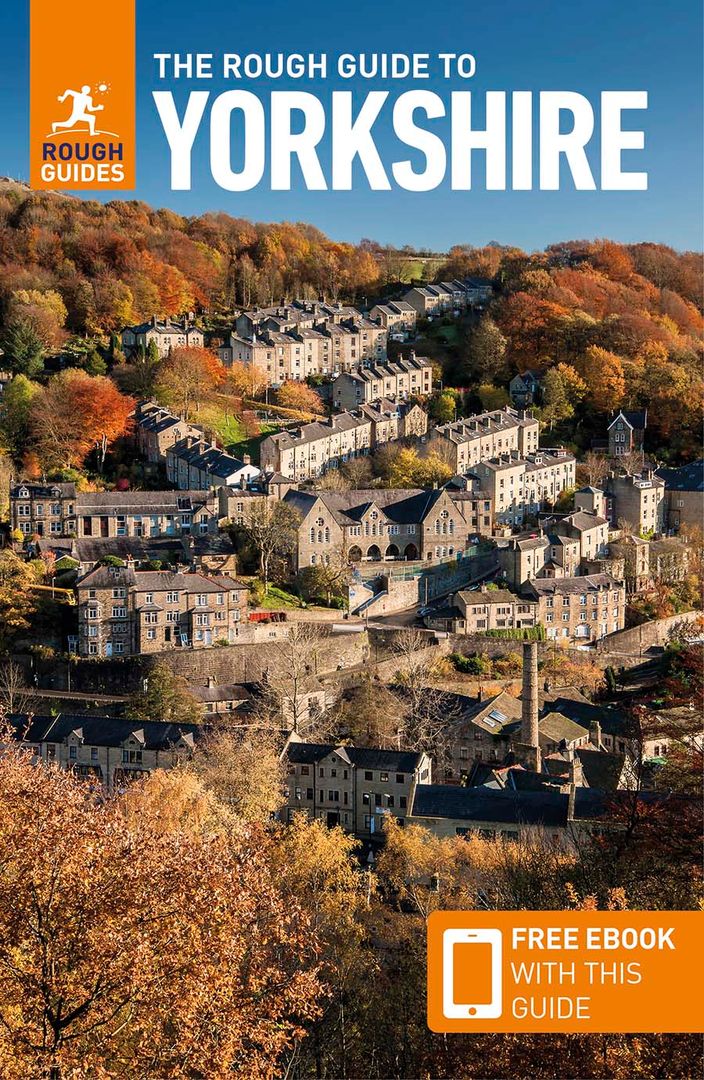
Reviews (4)
You might also love.
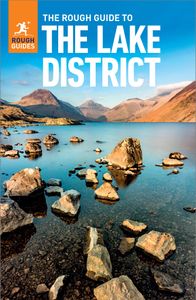
The Rough Guide to the Lake District

The Rough Guide to The Scottish Highlands & Islands
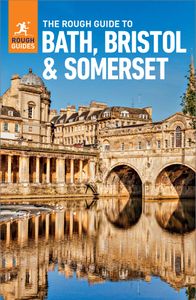
The Rough Guide to Bath, Bristol & Somerset
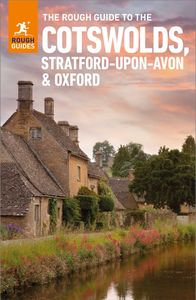
The Rough Guide to Cotswolds, Stratford-upon-Avon and Oxford
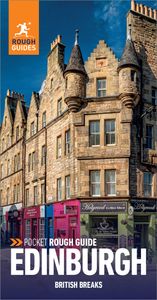
Pocket Rough Guide British Breaks Edinburgh
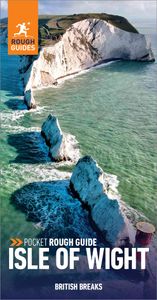
Pocket Rough Guide British Breaks Isle of Wight
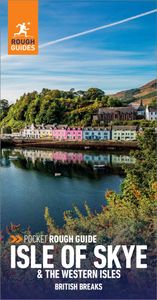
Pocket Rough Guide British Breaks Isle of Skye & the Western Isles
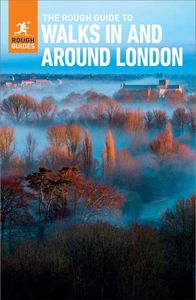
The Rough Guide to Walks in & Around London
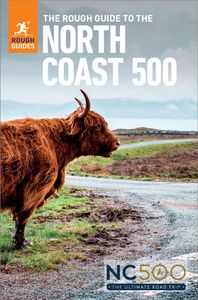
The Rough Guide to North Coast 500
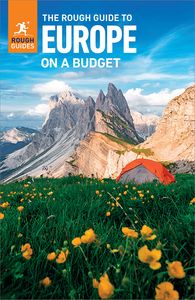
The Rough Guide to Europe on a Budget

Insight Guides The Greek Islands

Insight Guides Southeast Asia
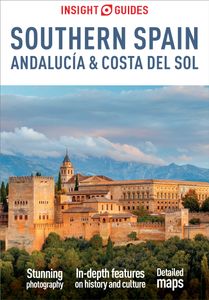
Insight Guides Southern Spain
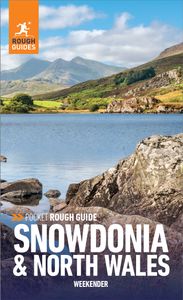
Pocket Rough Guide Weekender Snowdonia & North Wales

Pocket Rough Guide Barcelona

Pocket Rough Guide Stockholm

The Rough Guide to Prague
Yorkshire Travel Guide
Book your individual trip , stress-free with local travel experts
- roughguides.com
- Travel guide
- Local Experts
- Travel Advice
- Accommodation
Plan your tailor-made trip with a local expert
Book securely with money-back guarantee
Travel stress-free with local assistance and 24/7 support
It’s easy to be glib about Yorkshire – to outsiders it’s the archetypal “up North” with all the clichés that implies, from flat caps to grim factories. For their part, many Yorkshire locals are happy to play up to these prejudices, while nursing a secret conviction that there really is no better place in the world to live. In some respects, it’s a world apart, its most distinctive characteristics – from the broad dialect to the breathtaking landscapes – deriving from a long history of settlement, invention and independence. As for Yorkshire’s other boasts (the beer’s better, the air’s cleaner, the people are friendlier) – anyone who spends any time here will find it hard to argue with those.
Bradford and around
The east yorkshire coast, leeds and around, the north york moors, ripon and around, sheffield and around, york and around, the yorkshire dales.
The number-one destination is undoubtedly York , for centuries England’s second city, until the Industrial Revolution created new centres of power and influence. York’s mixture of medieval, Georgian and Victorian architecture is repeated in towns such as Beverley , Ripon and Richmond , while the Yorkshire coast, too, retains something of its erstwhile grandeur – Bridlington and Scarborough boomed in the nineteenth century and again in the postwar period, though it’s in smaller resorts like Whitby and Robin Hood’s Bay that the best of the coast is to be found today.
The engine of growth during the Industrial Revolution was not in the north of the county, but in the south and west, where Leeds, Bradford, Sheffield and their satellites were once the world’s mightiest producers of textiles and steel. Ruthless economic logic devastated the area in the twentieth century, but a new vigour has infused South and West Yorkshire during the last decade. The city-centre transformations of Leeds and Sheffield in particular have been remarkable, while Bradford is a fine diversion on the way to Haworth , home of the Brontë sisters.
The Yorkshire Dales , to the northwest, possesses a glorious collection of places to visit, with a patchwork of stone-built villages, limestone hills, serene valleys and majestic heights. The county’s other National Park, the North York Moors , is divided into bleak upland moors and a tremendous rugged coastline between Robin Hood’s Bay and Staithes.
Tailor-made travel itineraries for England, created by local experts

20 days / from 2994 USD
The Great British Road Trip
Get ready to explore Britain on this unique self-drive road trip. Choose the car of your liking before you hit the road: from the Cotswolds and its picturesque villages over the Beatle's favorite hang-out in Liverpool to Scotland's capital Edinburgh: this trip includes many highlights to be explored
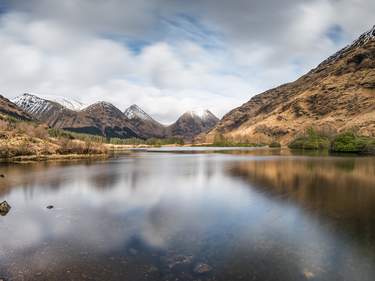
7 days / from 1350 USD
Magical 7-Day Family Adventure in Scotland and England : From Harry Potter to Loch Ness!
Searching for an unforgettable family adventure? Scotland is the perfect destination! With a perfect balance of nature, adventure, and Scottish culture. This 7-day trip offers a delightful mix of activities that everyone in the family will enjoy. Get ready to create life long lasting memories!
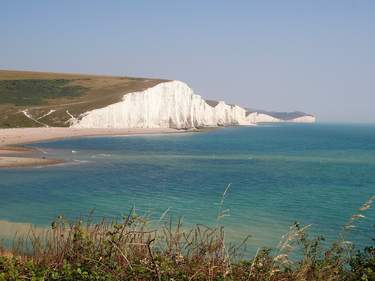
5 days / from 638 USD
Refreshing English Countryside Break
Outside of London, England is known with a countryside full of history, picturesque villages, patchwork hills, and winding country roads. Explore the countryside with its castles, parks, and historical cities such as Oxford.
With its tangle of old streets, cobbled lanes and elegant Georgian and Victorian terraces BEVERLEY , nine miles north of Hull, is the very picture of a traditional market town. More than 350 of its buildings are listed, and though you could see its first-rank offerings in a morning, it makes an appealing place to stay.
BRADFORD has always been a working town, booming in tandem with the Industrial Revolution, when just a few decades saw it transform from a rural seat of woollen manufacture to a polluted metropolis. In its Victorian heyday it was the world’s biggest producer of worsted cloth, its skyline etched black with mill chimneys, and its hills clogged with some of the foulest back-to-back houses of any northern city. A look at the Venetian-Gothic Wool Exchange building on Market Street, or a walk through Little Germany , northeast of the city centre (named for the German wool merchants who populated the area in the second half of the 1800s) provides ample evidence of the wealth of nineteenth-century Bradford.
Contemporary Bradford, perhaps the most multicultural centre in the UK outside London, is valiantly rinsing away its associations with urban decrepitude, and while it can hardly yet be compared with neighbouring Leeds as a visitor attraction, it has two must-see attractions in the National Media Museum and the industrial heritage site of Saltaire . The major annual event is the Bradford Mela , a one-day celebration of the arts, culture and food of the Indian subcontinent, held in June or July.
The East Yorkshire coast curves south in a gentle arc from the mighty cliffs of Flamborough Head to Spurn Head, a hook-shaped promontory formed by relentless erosion and shifting currents. There are few parts of the British coast as dangerous – indeed, the Humber lifeboat station at Spurn Point is the only one in Britain permanently staffed by a professional crew. Between the two points lie a handful of tranquil villages and miles of windswept dunes and mud flats. The two main resorts, Bridlington and Filey , couldn’t be more different, but each has their own appeal.
Bridlington and around
The southernmost resort on the Yorkshire coast, BRIDLINGTON has maintained its harbour for almost a thousand years. The seafront promenade looks down upon the town’s best asset – its sweeping sandy beach . It’s an out-and-out family resort, which means plenty of candyfloss, fish and chips, rides, boat trips and amusement arcades. The historic core of town is a mile inland, where in the largely Georgian Bridlington Old Town the Bayle Museum presents local history in a building that once served as the gateway to a fourteenth-century priory. Every November, Bridlington hosts a highly regarded World Music Festival, Musicport , which pulls in some very big names.
Around fourteen miles of precipitous 400ft-high cliffs gird Flamborough Head , just to the northeast of Bridlington. The best of the seascapes are visitable on the peninsula’s north side, accessible by road from Flamborough village.
HARROGATE – the very picture of genteel Yorkshire respectability – owes its landscaped appearance and early prosperity to the discovery of Tewit Well in 1571. This was the first of more than eighty ferrous and sulphurous springs that, by the nineteenth century, were to turn the town into one of the country’s leading spas. Tours of the town should begin with the Royal Baths , facing Crescent Road, first opened in 1897 and now restored to their late Victorian finery. You can experience the beautiful Moorish-style interior during a session at the Turkish Baths and Health Spa . Just along Crescent Road from the Royal Baths stands the Royal Pump Room , built in 1842 over the sulphur well that feeds the baths. The town’s earliest surviving spa building, the old Promenade Room of 1806, is just 100 yards from the Pump Room on Swan Road – now housing the Mercer Art Gallery .
To the southwest (entrance opposite the Royal Pump Room), the 120-acre Valley Gardens are a delight, while many visitors also make for the botanical gardens at Harlow Carr , the northern showpiece of the Royal Horticultural Society. These lie 1.5 miles out, on the town’s western edge – the nicest approach is to walk through the Valley Gardens and pine woods, though bus #106 will get you there as well.
Of English literary shrines, probably only Stratford sees more visitors than the quarter of a million who swarm annually into the village of HAWORTH , eight miles north of Bradford, to tramp the cobbles once trodden by the Brontë sisters. In summer the village’s steep Main Street is lost under huge crowds, herded by multilingual signs around the various stations on the Brontë trail . The most popular local walk runs to Brontë Falls and Bridge , reached via West Lane (a continuation of Main Street) and a track from the village, signposted “Bronte Falls”, and to Top Withens , a mile beyond, a ruin fancifully (and erroneously) thought to be the model for the manor, Wuthering Heights (allow 3hr for the round trip). The moorland setting beautifully evokes the flavour of the book, and to enjoy it further you could walk on another two and a half miles to Ponden Hall , claimed by some to be Thrushcross Grange is Wuthering Heights .
HULL – officially Kingston upon Hull – dates back to 1299, when it was laid out as a seaport by Edward I. It quickly became England’s leading harbour, and was still a vital garrison when the gates were closed against Charles I in 1642, the first serious act of rebellion of what was to become the English Civil War. Fishing and seafaring have always been important here, and today’s city maintains a firm grip on its heritage with a number of superb visitor attractions.
Yorkshire’s commercial capital, and one of the fastest-growing cities in the country, LEEDS has undergone a radical transformation in recent years. There’s still a true northern grit to its character, and in many of its dilapidated suburbs, but the grime has been removed from the impressive Victorian buildings and the city is revelling in its new persona as a booming financial, commercial and cultural centre. The renowned shops , restaurants , bars and clubs provide one focus of a visit to contemporary Leeds – it’s certainly Yorkshire’s top destination for a day or two of conspicuous consumption and indulgence. Museums include the impressive Royal Armouries , which hold the national arms and armour collection, while the City Art Gallery has one of the best collections of British twentieth-century art outside London. Beyond the city, a number of major attractions are accessible by bus or train, from the stately home Harewood House and the gritty National Coal Mining Museum to the stunning new Hepworth Gallery and the Yorkshire Sculpture Park .
Leeds concerts and festivals
Temple Newsam , four miles east of the centre hosts numerous concerts and events, from plays to rock gigs and opera, and at Kirkstall Abbey every summer there’s a Shakespeare Festival with open-air productions of the Bard’s works. Roundhay Park is the other large outdoor venue for concerts, while Bramham Park, ten miles east of the city, hosts the annual Leeds Carling Festival at the end of August with rock/indie music on five stages. August bank holiday weekend heralds the West Indian Carnival in the Chapeltown area of Leeds.
National Coal Mining Museum
While the gentry enjoyed the comforts of life in grand houses like Harewood, just a few miles away generations of Yorkshiremen sweated out a living underground. Mining is now little more than a memory in most parts of Yorkshire, but visitors can get all too vivid an idea of pit life through the ages at the excellent
. Based in a former pit, Caphouse Colliery, the highlight is an underground mine tour (90min, warm clothes required; arrive early in school hols) with a former miner as your guide.
Virtually the whole of the North York Moors , from the Hambleton and Cleveland hills in the west to the cliff-edged coastline to the east, is protected by one of the country’s finest National Parks. The heather-covered, flat-topped hills are cut by deep, steep-sided valleys, and views here stretch for miles, interrupted only by giant cultivated forests. This is great walking country; footpaths include the superb Cleveland Way , one of England’s premier long-distance National Trails, which embraces both wild moorland and the cliff scenery of the North Yorkshire coast. Barrows and ancient forts provide memorials of early settlers, mingling on the high moorland with the battered stone crosses of the first Christian inhabitants and the ruins of great monastic houses such as Rievaulx Abbey .
The North Yorkshire Moors Railway
The North Yorkshire Moors Railway connects Pickering with the Esk Valley (Middlesbrough–Whitby) line at Grosmont , eighteen miles to the north. The line was completed by George Stephenson in 1835, just ten years after the opening of the Stockton and Darlington Railway. Scheduled services operate year-round, and a day-return ticket costs £16. Part of the line’s attraction are the steam trains , though be warned that diesels are pulled into service when the fire risk in the forests is high. Steam services have also been extended from the end of the NYMR line at Grosmont to the nearby seaside resort of Whitby – departures are usually during school and bank holidays, with a return fare from Pickering of £21.
The attractive market town of RIPON , eleven miles north of Harrogate, is centred upon its small cathedral , which can trace its ancestry back to its foundation by St Wilfrid in 672; the original crypt below the central tower can still be reached down a stone passage. The town’s other focus is its Market Place , linked by narrow Kirkgate to the cathedral (market day is Thursday, with a farmers’ market on the third Sunday of the month). Meanwhile, three restored buildings – prison, courthouse and workhouse – show a different side of the local heritage, under the banner of the Yorkshire Law and Order Museums . Just four miles away lies Fountains Abbey , the one Yorkshire monastic ruin you must see.
Fountains Abbey and Studley Royal
It’s tantalizing to imagine how the English landscape might have appeared had Henry VIII not dissolved the monasteries:
Fountains Abbey
gives a good idea of what might have been. The abbey was founded in 1133 by thirteen dissident Benedictine monks and formally adopted by the Cistercian order two years later. Within a hundred years, Fountains had become the wealthiest Cistercian foundation in England, supporting a magnificent
abbey church
Perpendicular Tower
, almost 180ft high, looms over the whole ensemble, while equally grandiose in scale is the undercroft of the
Lay Brothers’ Dormitory
off the cloister, a stunningly vaulted space over 300ft long that was used to store the monastery’s annual harvest of fleeces. Its sheer size gives some idea of the abbey’s entrepreneurial scope; some thirteen tons of wool a year were turned over, most of it sold to Venetian and Florentine merchants who toured the monasteries.
A riverside walk, marked from the visitor centre car park, takes you through Fountains Abbey to a series of ponds and ornamental gardens, harbingers of Studley Royal (same times as the abbey), which can also be entered via the village of Studley Roger, where there’s a separate car park. This lush medley of lawns, lake, woodland and Deer Park was laid out in 1720 to form a setting for the abbey, and there are some scintillating views from the gardens, though it’s the cascades and water gardens that command most attention.
Yorkshire’s second city, SHEFFIELD remains linked with its steel industry, in particular the production of high-quality cutlery. As early as the fourteenth century the carefully fashioned, hard-wearing knives of hardworking Sheffield enjoyed national repute, while technological advances later turned the city into one of the country’s foremost centres of heavy and specialist engineering. Unsurprisingly, it was bombed heavily during World War II, and by the 1980s the steel industry’s subsequent downturn had tipped parts of Sheffield into dispiriting decline. The subsequent revival has been rapid, however, with the centre utterly transformed by flagship architectural projects. Steel, of course, still underpins much of what Sheffield is about: museum collections tend to focus on the region’s industrial heritage, complemented by the startling science-and-adventure exhibits at Magna , built in a disused steel works at Rotherham , the former coal and iron town a few miles northeast of the city.
Sheffield orientation
Sheffield’s city centre is very compact and easily explored on foot. Southeast of the Winter Garden/Peace Gardens hub, clubs and galleries exist alongside arts and media businesses in the Cultural Industries Quarter . North of the stations, near the River Don, Castlegate has a traditional indoor market (closed Sun) while spruced-up warehouses and cobbled towpaths line the neighbouring canal basin, Victoria Quays . South of here, down Fargate and across Peace Gardens, the pedestrianized Moor Quarter draws in shoppers, though it’s the Devonshire Quarter , east of the gardens and centred on Division Street, that is the trendiest shopping area. A little further out, to the northeast of the city centre and easily accessible by bus or tram, lies the huge Meadowhall Shopping Complex , built on the site of one of Sheffield’s most famous steelworks.
YORK is the North’s most compelling city, a place whose history, said George VI, “is the history of England”. This is perhaps overstating things a little, but it reflects the significance of a metropolis that stood at the heart of the country’s religious and political life for centuries, and until the Industrial Revolution was second only to London in population and importance. These days a more provincial air hangs over the city, except in summer when it comes to feel like a heritage site for the benefit of tourists. That said, no trip to this part of the country is complete without a visit to York, and the city is also well placed for any number of day-trips , the most essential being to Castle Howard , the gem amongst English stately homes.
The Minster is the obvious place to start, and you won’t want to miss a walk around the walls. The medieval city is at its most evocative around the streets known as Stonegate and the Shambles , while the earlier Viking city is entertainingly presented at Jorvik , perhaps the city’s favourite family attraction. Standout historic buildings include the Minster’s Treasurer’s House, Georgian Fairfax House, the Merchant Adventurers’ Hall, and the stark remnants of York’s Castle . The two major museum collections are the incomparable Castle Museum and the National Railway Museum (where the appeal goes way beyond railway memorabilia), while the evocative ruins and gardens of St Mary’s Abbey house the family-friendly Yorkshire Museum . Just fifteen miles away from town, and accessible by bus, Castle Howard is one of the nation’s finest stately homes.
Brief history
An early Roman fortress of 71 AD in time became a city – Eboracum, capital of the empire’s northern European territories and the base for Hadrian’s northern campaigns. Later, the city became the fulcrum of Christianity in northern England: on Easter Day in 627, Bishop Paulinus, on a mission to establish the Roman Church, baptized King Edwin of Northumbria in a small timber chapel. Six years later the church became the first minster and Paulinus the first archbishop of York. In 867 the city fell to the Danes , who renamed it Jorvik , and later made it the capital of eastern England (Danelaw). Later Viking raids culminated in the decisive Battle of Stamford Bridge (1066) six miles east of the city, where English King Harold defeated Norse King Harald – a pyrrhic victory in the event, for his weakened army was defeated by the Normans just a few days later at the Battle of Hastings, with well-known consequences for all concerned.
The Normans devastated much of York’s hinterland in their infamous “Harrying of the North”. Stone walls were thrown up during the thirteenth century, when the city became a favoured Plantagenet retreat and commercial capital of the north, its importance reflected in the new title of Duke of York, bestowed ever since on the monarch’s second son. Although Henry VIII’s Dissolution of the Monasteries took its toll on a city crammed with religious houses, York remained wedded to the Cathoic cause, and the most famous of the Gunpowder Plot conspirators, Guy Fawkes , was born here. During the Civil War Charles I established his court in the city, which was strongly pro-Royalist, inviting a Parliamentarian siege. Royalist troops, however, were routed by Cromwell and Sir Thomas Fairfax at the Battle of Marston Moor in 1644, another seminal battle in England’s history, which took place six miles west of York.
The city’s eighteenth-century history was marked by its emergence as a social centre for Yorkshire’s landed elite. Whilst the Industrial Revolution largely passed it by, the arrival of the railways brought renewed prosperity, thanks to the enterprise of pioneering “Railway King” George Hudson, lord mayor during the 1830s and 1840s. The railway is gradually losing its role as a major employer, as is the traditional but declining confectionery industry, and incomes are now generated by new service and bioscience industries – not forgetting, of course, the four million annual tourists.
Where Jorvik shows what was unearthed at Coppergate, the associated attraction that is
illustrates the science involved. Housed five minutes’ walk away from the museum, in the medieval church of St Saviour, on St Savioursgate, a simulated dig allows you to take part in a range of excavations in the company of archeologists, using authentic tools and methods. Tours to visit
Dig Hungate
, York’s latest major archeological excavation, start from here.
The city’s blockbuster historic exhibit is
, located by the Coppergate shopping centre. Propelling visitors in “time capsules” on a ride through the tenth-century city of York, the museum presents not only the sights but also the sounds and even the smells of a riverside Viking city. Excavations of Coppergate in 1976 uncovered a real Viking settlement, now largely buried beneath the shopping centre outside. But at Jorvik you can see how the unearthed artefacts were used, and watch live-action domestic scenes on actual Viking-age streets, with constipated villagers, axe-fighting and other singular attractions.
The Yorkshire Dales – “dales” from the Viking word dalr (valley) – form a varied upland area of limestone hills and pastoral valleys at the heart of the Pennines. Protected as a National Park, (or, in the case of Nidderdale, as an Area of Outstanding Natural Beauty), there are more than twenty main dales covering 680 square miles, crammed with opportunities for outdoor activities. Most approaches are from the south, via the superbly engineered Settle to Carlisle Railway , or along the main A65 road from towns such as Skipton , Settle and Ingleton . Southern dales like Wharfedale are the most visited, while neighbouring Malhamdale is also immensely popular due to the fascinating scenery squeezed into its narrow confines around Malham village. Ribblesdale is more sombre, its villages popular with hikers intent on tackling the famous Three Peaks – the mountains of Pen-y-ghent, Ingleborough and Whernside. To the northwest lies the more remote Dentdale , one of the least known but most beautiful of the valleys, and further north still Wensleydale and Swaledale , the latter of which rivals Dentdale as the most rewarding overall target. Both flow east, with Swaledale’s lower stretches encompassing the appealing historic town of Richmond .
Here for the beer
If you’re a beer fan, the handsome Wensleydale market town of Masham (pronounced Mass’m) is an essential point of pilgrimage. At Theakston brewery (tours daily 11am–3pm; reservations advised; w theakstons.co.uk ), sited here since 1827, you can learn the arcane intricacies of the brewer’s art and become familiar with the legendary Old Peculier ale. The Black Sheep Brewery , set up in the early 1990s by one of the Theakston family brewing team, also offers tours (daily 11am–4pm, but call for availability; w blacksheepbrewery.com ). Both are just a few minutes’ signposted walk out of the centre.
A few miles west of Wharfedale lies Malhamdale , one of the National Park’s most heavily visited regions, thanks to its three outstanding natural features of Malham Cove , Malham Tarn and Gordale Scar . All three attractions are within easy hiking distance of Malham village .
MALHAM village is home to barely a couple of hundred people who inhabit the huddled stone houses on either side of a bubbling river. Appearing in spectacular fashion a mile to the north, the white-walled limestone amphitheatre of Malham Cove rises 300ft above its surroundings. After a breath-sapping haul to the top, you are rewarded with fine views and the famous limestone pavement, an expanse of clints (slabs) and grykes (clefts) created by water seeping through weaker lines in the limestone rock. A simple walk (or summer shuttle bus ride) over the moors abruptly brings Malham Tarn into sight, its waterfowl protected by a nature reserve on the west bank. Meanwhile, at Gordale Scar (also easily approached direct from Malham village), the cliffs are if anything more spectacular than at Malham Cove. The classic circuit takes in cove, tarn and scar in a clockwise walk from Malham (8 miles; 3hr 30min), but you can also do it on horseback – the Yorkshire Dales Trekking Centre at Holme Farm in the village centre is the place to enquire about saddling up.
The Settle to Carlisle Railway
The 72-mile Settle to Carlisle line is a feat of Victorian engineering that has few equals in Britain. In particular, between Horton and Ribblehead, “ England’s most scenic railway ” climbs 200ft in five miles, before crossing the famous 24-arched Ribblehead viaduct and disappearing into the 2629 yards of the Blea Tunnel. Meanwhile, the station at Dent Head is the highest, and bleakest, mainline station in England. The journey from Settle to Carlisle takes 1hr 40min, so it’s easy to do the full return trip in one day. If your time is short, ride the most dramatic section between Settle and Garsdale. There are connections to Settle from Skipton and Leeds.
RICHMOND is the Dales’ single most tempting destination, thanks mainly to its magnificent castle , whose extensive walls and colossal keep cling to a precipice above the River Swale. Indeed, the entire town is an absolute gem, centred on a huge cobbled market square backed by Georgian buildings, hidden alleys and gardens. Market day is Saturday, augmented by a farmers’ market on the third Saturday of the month.
Top image: Aerial view of Robin Hood’s Bay, North Yorkshire, England © Andrei Petrus/Shutterstock
Discover more places in England
- The North Yorkshire coast
The Rough Guides to England and related travel guides
In-depth, easy-to-use travel guides filled with expert advice.

Find even more inspiration here

Planning your own trip? Prepare for your trip
Use Rough Guides' trusted partners for great rates
written by Rough Guides Editors
updated 06.09.2021
Ready to travel and discover England?
Get support from our local experts for stress-free planning & worry-free travels.
- Travel advice
- Where to stay

Buy new: $20.03 $20.03 FREE delivery May 13 - 29 Ships from: GrandEagleRetail Sold by: GrandEagleRetail
Buy used: $8.77.

Download the free Kindle app and start reading Kindle books instantly on your smartphone, tablet, or computer - no Kindle device required .
Read instantly on your browser with Kindle for Web.
Using your mobile phone camera - scan the code below and download the Kindle app.

Image Unavailable

- To view this video download Flash Player

Follow the author

The Rough Guide to Yorkshire (Travel Guide with Free eBook) (Rough Guides) Paperback – July 1, 2019
There is a newer edition of this item:.

Purchase options and add-ons
- Detailed regional coverage: provides practical information for every kind of trip, from off-the-beaten-track adventures to chilled-out breaks in popular tourist areas
- Honest and independent reviews: written with Rough Guides' trademark blend of humour, honesty and expertise, our writers will help you make the most from your trip to Yorkshire
- Meticulous mapping: practical full-colour maps, with clearly numbered, colour-coded keys. Find your way around the Yorkshire Dales, the North York Moors and many more locations without needing to get online
- Fabulous full-colour photography: features inspirational colour photography, including the rugged landscape of Buttertubs Pass and the atmospheric lighthouse at Spurn Head
- Time-saving itineraries: carefully planned routes will help inspire and inform your on-the-road experiences
- Things not to miss: Rough Guides' rundown of Whitby, the Esk Valley and the Dales' best sights and top experiences
- Travel tips and info: packed with essential pre-departure information including getting around, accommodation, food and drink, health, the media, festivals, sports and outdoor activities, culture and etiquette, shopping and more
- Background information: comprehensive 'Contexts' chapter provides fascinating insights into Yorkshire, with coverage of history, religion, ethnic groups, environment, wildlife and books, plus a handy language section and glossary
- The ultimate travel tool: download the free eBook to access all this from your phone or tablet
- Covers: South Yorkshire; West Yorkshire; The Vale of York; The Yorkshire Dales; The North York Moors; East Riding of Yorkshire
- Print length 328 pages
- Language English
- Publisher Rough Guides
- Publication date July 1, 2019
- Dimensions 8.25 x 0.75 x 7.75 inches
- ISBN-10 1789194156
- ISBN-13 978-1789194159
- See all details

Customers who viewed this item also viewed

From the Publisher

Classic, in-depth, "tell it like it is" guidebooks covering cities, regions, and countries.
Editorial reviews, from the inside flap.
- South Yorkshire
- West Yorkshire
- The Vale of York
- The Yorkshire Dales
- The North York Moors
- East Riding of Yorkshire
From the Back Cover
Product details.
- Publisher : Rough Guides; 3rd edition (July 1, 2019)
- Language : English
- Paperback : 328 pages
- ISBN-10 : 1789194156
- ISBN-13 : 978-1789194159
- Item Weight : 12.8 ounces
- Dimensions : 8.25 x 0.75 x 7.75 inches
- #33 in Yorkshire England Travel Books
- #509 in General England Travel Guides
- #1,872 in General Great Britain Travel Guides
About the author
Rough guides.
Escape the everyday with Rough Guides.
Rough Guides is a leading travel publisher known for its “tell it like it is” attitude, accurate, up-to-date content and authoritative contemporary writing. We publish books covering more than 120 destinations around the globe, producing an ever-growing series of ebooks and a range of reference titles, with an award-winning website.
Since 1982, our books have helped over 35 million travellers explore the world with accurate, honest and informed travel writing.
---------------------------------------
• INSPIRATIONAL GUIDES
Stylish picture-packed inspirational books that make great gifts.
• ROUGH GUIDES
Classic in-depth 'Tell it like it is' guidebooks covering cities, regions and countries.
• ON A BUDGET
Guidebook bibles for budget-conscious travellers.
• FIRST TIME
Everything you need to know before you go.
• POCKET GUIDES
Compact practical guidebooks for short-trip travellers.
• WALKING GUIDES
Compact practical guidebooks tailored to trekkers and walkers.
• PHRASEBOOKS
User-friendly, pocket-sized phrasebooks.
Now we offer a personalised trips of a lifetime with unique adventure
Find your own path with Rough Guides tailor-made trip - roughguides.com
Customer reviews
Customer Reviews, including Product Star Ratings help customers to learn more about the product and decide whether it is the right product for them.
To calculate the overall star rating and percentage breakdown by star, we don’t use a simple average. Instead, our system considers things like how recent a review is and if the reviewer bought the item on Amazon. It also analyzed reviews to verify trustworthiness.
- Sort reviews by Top reviews Most recent Top reviews
Top reviews from the United States
There was a problem filtering reviews right now. please try again later..
Top reviews from other countries
- Amazon Newsletter
- About Amazon
- Accessibility
- Sustainability
- Press Center
- Investor Relations
- Amazon Devices
- Amazon Science
- Sell on Amazon
- Sell apps on Amazon
- Supply to Amazon
- Protect & Build Your Brand
- Become an Affiliate
- Become a Delivery Driver
- Start a Package Delivery Business
- Advertise Your Products
- Self-Publish with Us
- Become an Amazon Hub Partner
- › See More Ways to Make Money
- Amazon Visa
- Amazon Store Card
- Amazon Secured Card
- Amazon Business Card
- Shop with Points
- Credit Card Marketplace
- Reload Your Balance
- Amazon Currency Converter
- Your Account
- Your Orders
- Shipping Rates & Policies
- Amazon Prime
- Returns & Replacements
- Manage Your Content and Devices
- Recalls and Product Safety Alerts
- Conditions of Use
- Privacy Notice
- Consumer Health Data Privacy Disclosure
- Your Ads Privacy Choices

Yorkshire Bucket List | 63 Amazing Yorkshire Travel Ideas for 2024
Grey Globetrotters contains affiliate links and is an Amazon Services LLC Associates Program member. If you make a purchase using one of these Amazon links, I may receive compensation at no extra cost to you. See my Disclosure Policy for more information.
Welcome to my mammoth Yorkshire bucket list! If you haven’t guessed by now, I LOVE Yorkshire. I moved from Jersey to Yorkshire over ten years ago and have no plans to return.
It’s a beautiful part of northern England, with its hills and dales, vibrant cities, quaint towns and villages , stunning coastline and magnificent castles.
I spend a ton of my free time tracking down new Yorkshire places to visit and finding all the experience days Yorkshire has to offer (there are so many to choose from!)
If you’re looking for places to visit in Yorkshire , then check out this (ever-growing) Yorkshire bucket list to add some things to do in Yorkshire to your must-see list!

My Big Yorkshire Bucket List
I’ve broken down my bucket list for Yorkshire by the four counties that make up the vast Yorkshire region in the north of England, as I think it’s so much easier for travel planning.
From the wild and beautiful North York Moors and Yorkshire Dales of North Yorkshire to the northern reaches of the stunning Peak District in South Yorkshire, you won’t be short of ideas for Yorkshire places to visit with this list as your inspiration!
North Yorkshire Bucket List

North Yorkshire is breathtaking, and that’s just one of the reasons I’ve made it my home. There is an incredible amount of things to do in North Yorkshire, but here are some of the highlights.
- Visit York (atmospheric medieval city)
- Experience the most stylish afternoon tea
- Find the town’s best dog-friendly places to eat
- Take a tour of the original Victorian Turkish Baths
- Follow the springtime cherry blossom trail.
- Visit Knaresborough (home to the oldest paid tourist attraction in the UK)
- Visit Ripon (medieval city and cathedral)
- Visit Staithes (a quaint traditional fishing village with the narrowest street in the north of England.
- Visit the thriving market town of Skipton
- Skipton Castle – the most complete inhabited castle in the North of England
- Spofforth Castle – located in the prettiest little village
- Harewood Castle – a proper hidden gem
- Bolton Castle
- Scarborough Castle
- Helmsley Castle
- Visit Grassington (film location for “All Creatures Great and Small”)
- Visit Bolton Abbey (home to the most dangerous river in the world ).
- Explore the picturesque old smuggling village of Robin Hood’s Bay .
- Go on a wine-tasting tour at an award-winning English vineyard
- Discover charming coastal villages on a North Yorkshire Coast road trip
- Go hiking or climbing at Brimham Rocks – my favourite place in the world to “blow away the cobwebs”!
- Discover a sensational gin distillery – in the heart of rural Nidderdale .
- Explore the waterfalls at Aysgarth, Lumb Hole and Hull Pot
- Spend 24 hours in Goathland to explore the village’s Harry Potter connections and Heartbeat filming locations .
- Do some epic hikes on the challenging 3 peaks of Yorkshire route.
- Discover the UK’s biggest piece of public art – a real hidden gem near the town of Pateley Bridge
- Go stargazing in the UK’s biggest designated dark sky reserve.
- Drive along “ England’s only truly spectacular road” (rated by Jeremy Clarkson).
West Yorkshire Bucket List
West Yorkshire is home to the cities of Leeds and Bradford and is famous as the birthplace of the Bronte sisters, numerous cricketing legends, and poet Ted Hughes. There are some incredible things to see and do in West Yorkshire!

- Spot the city’s most Instagrammable places (there are lots!)
- Discover cool places to stay in Leeds
- Go on awesome day trips
- Explore the Royal Armouries Museum
- Visit Leeds Art Gallery
- Check out Kirkgate Market and the Victorian covered arcades
- Learn interesting facts about Leeds that most tourists don’t know
- Explore Harewood House – one of the most beautiful stately homes in the UK.
- See the stunning Georgian Piece Hall in Halifax
- Take a trip on the Keighley & Worth Valley heritage railway .
- Visit Bradford (Home of the National Science and Media Museum )
- Visit Haworth (home of the Bronte Sisters ) for the Brontë Parsonage Museum , cobbled streets and traditional tea rooms
- Travel to Wakefield for the Hepworth Art Gallery on the waterfront.
- Enjoy walks and incredible views on Ilkley Moor
- Enjoy wine tasting with picturesque views at Holmfirth Vineyard
- Browse the galleries and craft stores in bohemian Hebden Bridge
- Get cultural outdoors at the Yorkshire Sculpture Park
- Hike through the picturesque Hardcastle Crags Valley
- Explore the atmospheric ruins of Kirkstall Abbey
- Discover historic East Riddlesden Hall
- Time your trip for a cricket match or rugby union game at Headingley Stadium.
- Explore some of the best waterfalls in Yorkshire
- Take a day trip to Saltaire Village – A UNESCO World Heritage Site with Victorian architecture and the Salts Mill art gallery.
- Wakefield Cathedral: A beautiful cathedral with a history dating back to the 12th century.
- Take the kids to Eureka! The National Children’s Museum .
- Last of the Summer Wine Exhibition: Perfect for fans of the long-running TV show.
- Explore medieval church and cobbled streets in picturesque Heptonstall village.
East Yorkshire Bucket List

Vibrant and diverse East Yorkshire is bordered by the vast Humber River to the south, with a rugged and beautiful coastline. Famous for the Yorkshire Wolds, East Yorkshire views will take your breath away.
I spent five years in East Yorkshire as a young child and have a whole heap of places I can’t wait to revisit!
- Visit the stunning Spurn Point nature reserve and climb the steps of the lighthouse to enjoy views of the North Sea, the Humber Estuary and the historic Humber Forts.
- Spot the “Drinking Dinosaur” at Flamborough Head, beyond the beautiful lighthouse and look out for th sunbathing seals on the beach.
- Enjoy spectacular sunrises and sunsets over Bempton Cliffs, a seabird reserve where you can see thousands of nesting seabirds, including puffins and gannets.
- Walk across the 1.4 mile Humber Suspension Bridge which was the longest suspension bridge in the world when it was built. The views of the Humber Estuary and Hessle Foreshore are amazing when you drive over, but incredible if you walk.
- Discover Painsthorpe Dale and more stunning landscapes in the Yorkshire Wolds that inspired famous artist David Hockney
- Discover the fascinating heritage of Hull Old Town with its cobbled streets, historic buildings, and museums.
- Admire the gothic masterpiece of Beverley Minster, one of the largest parish churches in the UK.
- Enjoy the scenic beauty of the Yorkshire Wolds with its rolling hills, charming villages, and walking trails. The Wolds Way is a popular long-distance footpath.
- Explore the stately homes of Burton Constable Hall and Sewerby Hall and Gardens
- Enjoy the seaside town of Bridlington with its sandy beaches, amusement arcades, and the historic Bridlington Priory.
- Explore the gardens and woodlands of Wassand Hall, a beautiful estate with a Victorian walled garden.
- Visit the charming market towns of Driffield and Market Weighton, known for their local markets and historic architecture.
- Spend a day at Sewerby Hall, a Georgian country house with beautiful gardens, a zoo, and stunning views of the coast.
South Yorkshire Bucket List

South Yorkshire is home to the well-known cities of Sheffield, Doncaster, Rotherham and Barnsley, and on the doorstep of the beautiful Peak District National Park. Close to the border with the US, there are plenty of fun things to do in South Yorkshire!
- Kelham Island Museum: Explore the industrial heritage of Sheffield.
- Relax in the Botanical Gardens
- Wander through the Winter Gardens
- Browse the city centre Millennium Gallery
- Check the race schedule at Doncaster Racecourse:
- Explore medieval Conisbrough Castle and its well-preserved circular keep.
- Get nerdy at Magna Science Adventure Centre (my son loved it here)
- Step back in time at Wentworth Woodhouse – one of the UK’s largest country houses
- Get active in the Peak District National Park .
- Enjoy the Tropical Butterfly House, Wildlife and Falconry Centre (near Sheffield) .
- Visit Elsecar Heritage Centre for the heritage railway, antiques, and craft shops.
- Explore the working water mill and surrounding country park at Worsbrough Mill .
Final Thoughts: Yorkshire Bucket List
So there you have it! There are so many amazing Yorkshire places to visit; I hope you’ve found this Yorkshire bucket list helpful and it’s inspired you to add some experience days in Yorkshire to your UK itinerary.
Did you like this? Share the best Yorkshire places to visit now!

Coralie Thornton, the owner and author of Grey Globetrotters, has been a traveller for more than four decades. Today, she helps others experience the UK, Europe and bucketlist destinations with meticulously crafted guides and affordable luxury itineraries, Her passion for adventure has led her through over 40 countries, seeking cultural experiences, delicious foods, and hidden gems.
Similar Posts

21 Best Things to do in Pateley Bridge: Local Favourites 🇬🇧
Grey Globetrotters contains affiliate links and is an Amazon Services LLC Associates Program member. If you make a purchase using one of…

Complete Guide to Seaham Sea Glass Beach

27 Interesting Facts About Leeds You Probably Didn’t Know!

27 Fun Facts About England: Weird, Shocking & Just Plain Odd!

The Top 17 Spookiest Places in Europe: Guaranteed Spine-Chillers!

How To Have The Best London to York Day Trip: Tips From a Local

Best UK Travel Books for 2023 (Travel Guides & maps)
By: Author Tracy Collins
Posted on Last updated: October 8, 2022
Looking for a guide book to supplement all the great information available on this website? Look not further! Below you will find an updated selection of the best UK Travel Books available in 2022 covering the UK, London, Great Britain, England, Wales and Scotland!
The popularity of travel guide books is once again on the up and if you are looking for a resource to help plan your travels they are great place to start.
Combining a guide book or two with information provided on this website will ensure you have everything you need to start planning your trip.
In this article I have gathered together all the best guide books for UK travel including those for specific nations (England – Scotland – Wales – Ireland), as well as popular cities and regions.
Rick Steves Guidebooks
Lonely planet, rough guides, dk eyewitness.
- Fodor's Essential
Which regions of the UK do you need a guidebook for?
Other things to consider, best uk maps, best guide books for london 2021 and beyond, best london maps, best travel guide books for great britain, best travel guide books for england, best travel guide books for scotland, best guide books for wales, best guide books – ireland, uk guide books – historical interest, uk trip planning.
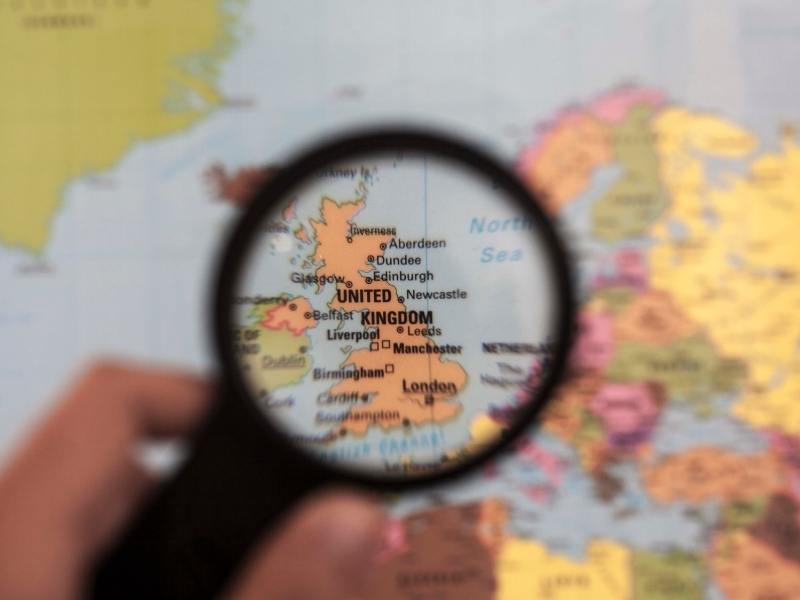

Tips for choosing the best UK travel guidebook for your trip
What are the characteristics of the main guide books available.
Guide books are not all the same and you can find a wide variation of styles written for travellers with different interests and budgets.
For example do you prefer a guide book with lots of photos, one that is more text heavy, one that covers the main sites or perhaps one that includes off the beaten track destinations?
Rick Steves provides an excellent introduction to the main sights (which he rates in order of importance for visitors) plus his books offer sound practical advice.
Written for an American audience his popularity has led to many of the places (hotels and restaurants) he recommends often becoming overbooked.
If you want more detailed information for specific areas or are looking for hidden gems or off the beaten track destinations one of the other guide books may be a better option (or used to supplement Rick’s guides)
Quick picks – Top 3 Rick Steve Guide Books for the UK
- Great Britain – Rick Steves Great Britain
- London – Rick Steves Pocket London
- Edinburgh – Rick Steves Snapshot Edinburgh
Lonely Planet are the biggest publisher of guide books in the world. The have a good range of guide books for the UK which provide detailed information for all travel budgets.
I find their smaller pocket guide books particularly useful. The Lonely Planet Pocket Guide to London covers all the main sights with practical information and tips. As the name suggests it also fits into your pocket or bag for easy reference when out and about.
Quick picks – Top 3 Lonely Planet Guide Books for the UK
- London – Pocket Guide to London
- Main sights – Lonely Planet Best of Great Britain
- Road Trips – 36 road trips around Great Britain
Rough Guides offer practical advice supplemented with beautiful photographs and useful maps.
They have produced some excellent guides to specific regions and areas of the UK written by those with a detailed local knowledge.
Quick picks – Top 3 Rough Guide Books for the UK
- Rough Guide to the Lake District
- Rough Guide to Yorkshire
- Rough Guide to Dorset
With beautiful photographs, maps and hand drawn illustrations the DK Eyewitness travel guides are my personal favourite. They are easy to use providing detailed and practical information about destinations.
The DK ‘Top 10″ series of guide books are excellent offering information in a concise, visual and user friendly way (and are small, light ad easy to carry around)
Quick picks – Top 3 DK Guide Books for the UK
- London – Top 10 London
- London – Family Guide to London
- Great Britain – DK Guide to Great Britain
Fodor’s Essential
Written by locals Fodor’s travel books have been around for over 80 years. They include detailed maps, itineraries and travel recommendations for all tastes and budgets.
As you will discover below there is a wide selection of guidebooks for UK travel. Some are pretty straightforward as they cover one nation, city or area of the UK such as
- Guidebooks for London
- Guidebooks for England
- Guidebooks for Scotland
- Guidebooks for Wales
- Guidebooks for Ireland (including Northern Ireland)
However there are also guidebooks which cover Great Britain . This means that they will include travel information for England, Scotland and Wales. Northern Ireland will not be included in these guidebooks as it is not geographically part of Great Britain.
- Check the date of publication – Buy the most up to date version to ensure access to current information.
- Check that the book covers the areas you plan to visit – especially when purchasing for the UK!
- If you are planning to take a guide book with you consider the weight and size! I often purchase a larger more detailed guide book to help with planning but pack a pocket size guide book for the trip. Many of the books are also available to purchase to download onto your Kindle or other e reader device.
- If you plan to take a map you may find that some guide books have a pullout map included.

Click links for prices – Marco Polo Map | Lonely Planet Planning Map | UK Scratch Map

Click links for prices: Rick Steves London | Fodor’s London Guide | Not For Tourists London | Rough Guide to London | Fodor’s 25 best London Guide | Eyewitness London | Frommers London | Thrifty Traveler’s London | Rick Steves Pocket London | DK Family Guide to London
A map of London is essential and I always carry one with me (and I have lived in the capital and visited many times!)

Click links for prices – Streetwise London | Lonely Planet London City Map | Street Smart London | Knopf Mapguides London | Streetwise London Underground Map | London Bus & Underground PopOut Map
Note that these guide books cover England, Scotland and Wales only.

Click links for prices – Rick Steves Great Britain | Back Roads Great Britain | Lonely Planet Great Britain | Lonely Planet Great Britain’s Best Road Trips | Fodor’s Essential Great Britain | Lonely Planet Best of Great Britain | DK Eyewitness Great Britain
There is a good range of guide books for England including those which are more area or city specific which may be useful if you are planning to spend some time in a specific area e.g the Cotswolds , the Lake District etc

Click links for prices – Rick Steves England | Lonely Planet England | Rough Guide to England | Fodor’s Essential England | Rough Guide to The Cotswolds | Rough Guide to Devon and Cornwall | Rough Guide to the Lake District

Click links for prices – Rough Guide to Scotland | Rough Guide to the Scottish Highlands and Islands | Lonely Planet Scotland | Rick Steves Scotland | Fodor’s Essential Scotland | Rick Steves Edinburgh | DK Eyewitness Scotland

Click links for prices – Rough Guide to Wales | Lonely Planet Wales | Wild Guide to Wales | Wales Coast Path Walks – Isle of Anglesey

Click links for prices – Fodor’s Essential Ireland | Everything travel guide to Ireland | Rick Steves Ireland | Back Roads Ireland

Click links for prices – Jane Austen’s England | The Time Traveler’s Guide to Medieval England | Wales Castles and Historic Places | Castles, Palaces and Stately Homes of Great Britain
This guide to the best UK guidebooks will have provided you with the best options for your trip. As you have seen there are a lot of UK guidebooks to choose from but we are confident you will find the right ones for you and your itinerary.
If you enjoy reading about a destination before you go or simply want some reading inspiration my best books to read about England or best books to read about Scotland are a great place to start.
You can find more information to help you to plan your UK trip in these articles:
- London Travel Guide
- England Travel Guide
- UK Accommodation Guide (England, Scotland, Wales & N Ireland)
- How to plan your UK travel budget
- How to get around the UK (Complete Guide to Transportation in the UK)
- Best Gifts for Anglophiles
Districts [ edit ]
The city is divided by the River Oka into two major parts: the Upper city ( Verkhnyaya or Nagornaya chast ) on the hilly right side and the Lower city ( Nizhnyaya or Zarechnaya chast — what literally means "the part over the river") on the left bank of the river. The Upper city is the old historical part of Nizhny Novgorod, whereas the Lower city is larger, newer and consists of more industrial districts.
Understand [ edit ]

History [ edit ]
The city was founded by Grand Duke George II of Russia in 1221 at the confluence of two most important rivers of his principality, the Volga and the Oka. Its name literally means Newtown the Lower , to distinguish it from the older Novgorod . A major stronghold for border protection, Nizhny Novgorod fortress took advantage of a natural moat formed by the two rivers.
Along with Moscow and Tver, Nizhny Novgorod was among several newly founded towns that escaped Mongol devastation on account of its insignificance and grew up into important centers of Russian political life during the period of Tatar yoke. For a short period of time it was the capital of the Suzdal Principality and competed with Moscow for the power in the region. However the competition with Moscow was lost and in 1392 the city was incorporated into Muscovy. Nizhny Novgorod Kremlin was built in 1508-1511 (under supervision of the Italian fortress engineers) and became one of the strongest Russian citadels. There is a legend saying that the project was initially developed with participation of Leonardo da Vinci. However there is no documented proof of Leonardo's work for that project, the only thing the legend is based on is the striking resemblance of Leonardo's sketches and the actual Kremlin schemes. The fortress was strong enough to withstand Tatar sieges in 1520 and 1536.
In 1612, the so-called national militia , gathered by a local merchant Kuzma Minin and commanded by Knyaz Dmitry Pozharsky expelled the Polish troops from Moscow, thus putting an end to the Time of Troubles and establishing the rule of the Romanov dynasty.
In 1817, the Makaryev Monastery Fair, one of the liveliest in the world the 16th-18th centuries, was transferred to Nizhny Novgorod, which thereupon started to attract numerous visitors and by the mid-19th century it turned Nizhny Novgorod into trade capital of the Russian Empire.
Under the Soviet period, the trade connections of the city were abandoned and Nizhny Novgorod became an important industrial centre instead. During the communist time the city was closed to foreigners to safeguard the security of Soviet military research. The physicist and the Nobel laureate Andrei Sakharov was exiled there during 1980-1986 to limit his contacts with foreigners.
Climate [ edit ]
The climate in the region is humid continental and it is similar to the climate in Moscow , although colder in winter, which lasts from late November until late March with a permanent snow cover.
By car [ edit ]
Nizhny Novgorod is situated on the M7/E30 road. The road is in decent condition, although with traffic it can take anywhere from 4 to 8 hours to drive to/from Moscow .
By boat [ edit ]
Turflot [dead link] , Infoflot , and many other companies operate multi-day river cruises down the Volga from early May to the end of September.
Many companies operate passenger boat service between Moscow and Astrakhan , with stops at most cities along the Volga River.
Get around [ edit ]
By foot [ edit ].
The city centre is compact and walkable. However, there are many inclines or steps from the river banks. The bridges are not pedestrian friendly since the sidewalk is very narrow and cars drive extremely fast close to the pedestrians.
By city rail [ edit ]
The City Rail connects areas where there are no metro lines. Connects with the subway at the Moscow railway station. It has 2 lines: Sormovskaya and Priokskaya. The fare by train costs 28 rubles. According to the Citicard Transport Card, the fare is 26 rubles. Also by train you can get to the nearest suburb, or transfer to suburban trains to Dzerzhinsk, Bor, Semenov or Arzamas.
By bus and trolleybus [ edit ]

As of May 2017 in each district of the city there are several city bus routes. The number of trolleybus routes is much less. In one district of the city there are 1-2 trolleybus routes. Trolleybus routes are completely absent in the Leninsky city district. It is worth noting that trolleybuses do not connect the Lower City to the Upper. This is because the trolleybuses do not have enough power to climb the mountain.
The trolleybus network is divided into 3 parts:
- The upper trolleybus network (it unites all three districts - Nizhegorodsky, Sovetsky and Prioksky) with a turning circle on the Minin Square, near the Kremlin.
- The lower trolleybus network (connects Kanavinsky, Moskovsky and Sormovsky districts)
- The Avtozavod trolleybus network (connects all the distant sleeping microdistricts among themselves)
By tram [ edit ]
Throughout the city, land trams run. The longest route of all is 417. It connects the outskirts of Avtozavodsky district with the Moskovsky Rail Terminal. The journey takes about 1 hour and 20 minutes. The route passes through the sleeping areas (approximately 75% of the way). Also in remote neighborhoods there are routes of several more trams, but in most cases, they are in the Upper City. By the way, you can reach there by tram 27 or 10 directly from the Moscow railway station.
By marshrutka [ edit ]
Marshrutkas do not stop at every stop. To indicate your intention to exit a marshrutka, press a button and to indicate your intention to enter a marshrutka en-route, you need to wave your hand.
By bicycle [ edit ]
Nizhny Novgorod has not very developed bicycle infrastructure. Special bike paths exist only on the Upper-Volga and Lower-Volga embankments and on Rozhdestvenskaya Street.
The upper city is very hilly and full of steep inclines and even many locals will get off their bicycles and push their bikes up the hill by foot. Drivers can be reckless and pose a danger to cyclists. The roads can also be icy during the winter. City cyclists solve this problem by replacing summer tires with winter tires.
Also, in 2017 the implementation of a new integrated transport scheme of the city began. It provides for a large number of bicycle paths in the Upper City (including on Bolshaya Pokrovskaya Street) and in the Lower City.
See [ edit ]
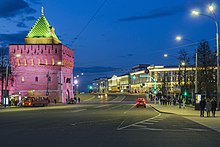
Monuments [ edit ]
- Monument to Valery Chkalov, the famous test pilot of the 1930s, known for his ultra long flight from Moscow to Washington State via the North Pole.
- Maxim Gorky, at the square named after him
- Alexander Pushkin (at the entrance to the Theatre of Opera and Ballet)
- 56.327974 44.001982 26 Prince George and Saint Simon of Suzdal , The Kremlin, St. Michael the Archangel Cathedral . Monument to the founders of the city of Prince Yuri II of Vladimir (also George Vsevolodovich) and Simeon of Suzdal ( updated Jun 2017 )
Religious [ edit ]
- Pechersky Ascencion Monastery , near Sennaya Square a couple miles east of downtown, halfway down the slope to Volga. With a cathedral and several churches surrounded by a restored stone wall, the monastery is the seat of the archbishops of Nizhny Novgorod.
- A big variety of other churches and convents.
Buy [ edit ]

Sleep [ edit ]
All hotels and hostels offer free Wi-Fi and many have computer terminals. Almost all accept credit cards. Hotels and hostels will usually provide a visa invitation and registration for an additional fee.
Connect [ edit ]
Phone [ edit ].
For information on purchasing a SIM card in Russia, see Russia#Connect .
Note that Nizhny Novgorod is in the Volga region zone, and SIM cards purchased elsewhere, such as in Moscow or Saint Petersburg , may be subject to roaming charges.
There are payphones in the streets; however, you can only buy phone-cards in the post offices and in a few newspaper kiosks.
Internet [ edit ]
Free WiFi is available in most hotels, shopping malls, university buildings, restaurants and cafes, the airport as well as several metro stations. There is also free public WiFi on B. Pokrovskaya street.
Cope [ edit ]

Navigation menu
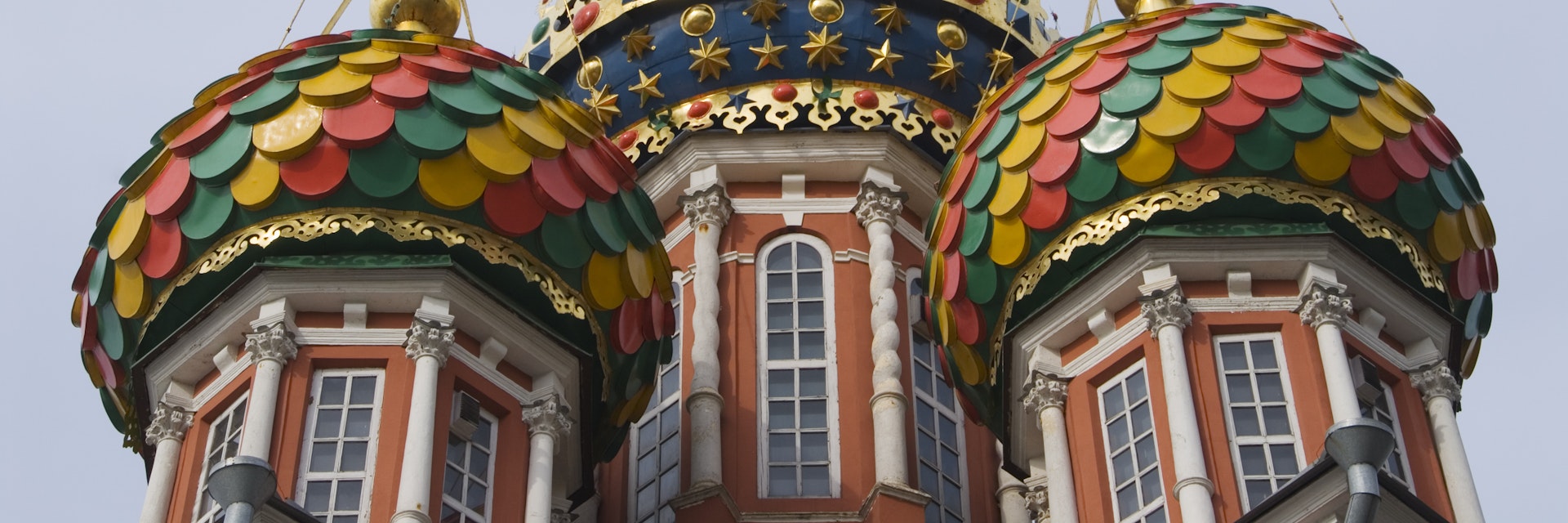
Getty Images/Lonely Planet Images
Nizhny Novgorod
Russia's fifth-largest city – sometimes referred to as the country's 'third capital' – would likely go unnoticed by most travellers if not for its arresting hilltop kremlin, overlooking the confluence of two wide rivers: the Volga and Oka. This is the locale where merchant Kuzma Minin and Count Dmitry Pozharsky (men commemorated in a monument in front of Moscow's St Basil’s Cathedral) rallied a popular army to repel the Polish intervention in 1612. It's also the city (then known as 'Gorky') where late Soviet scientist-dissident Andrei Sakharov was banished in the 1980s as punishment for opposing the Soviet Union's 1979 invasion of Afghanistan.
Attractions
Must-see attractions.
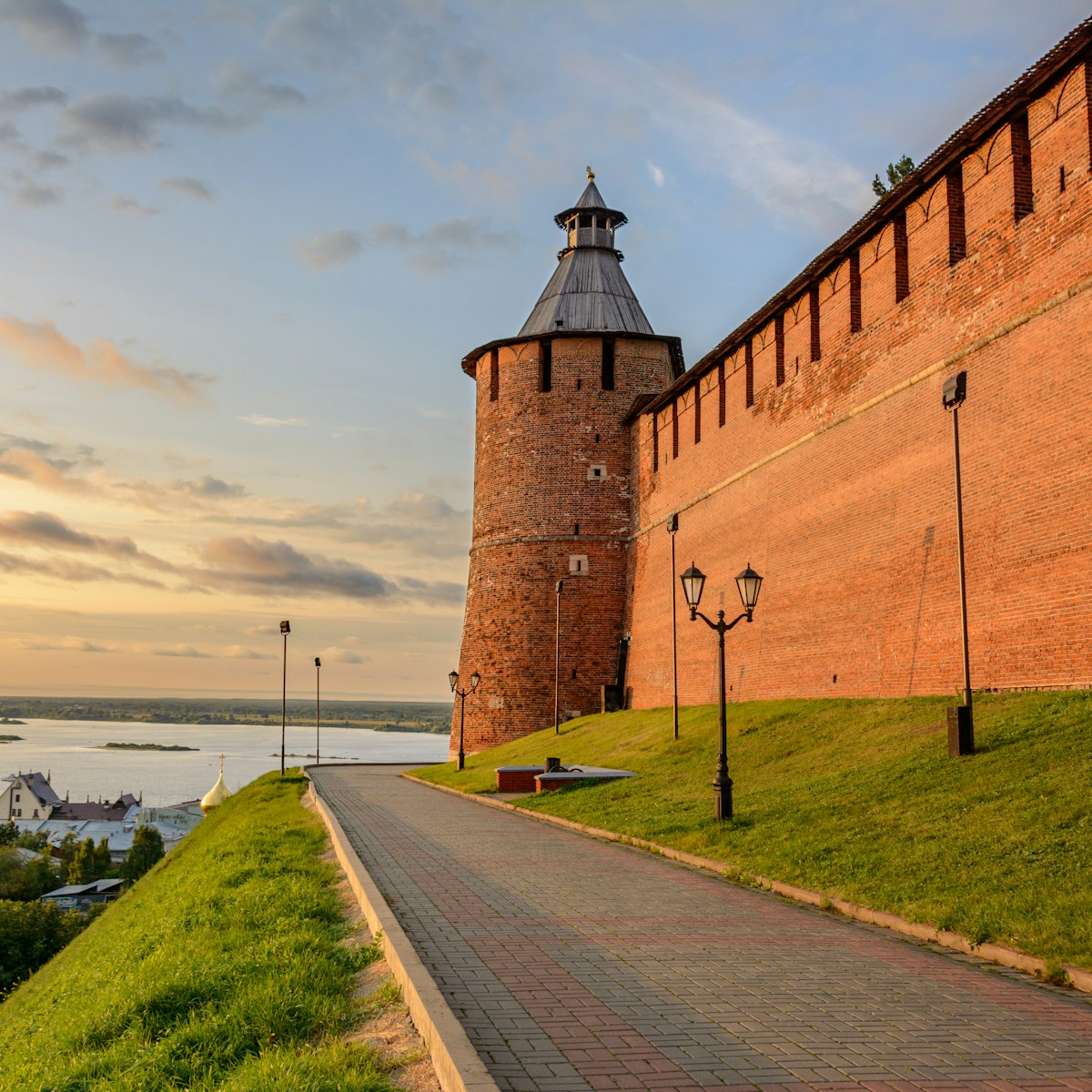
Built on remnants of an earlier settlement, Nizhny Novgorod’s magnificent kremlin dates to 1500–15 when Italian architect Pyotr Fryazin began work on its…
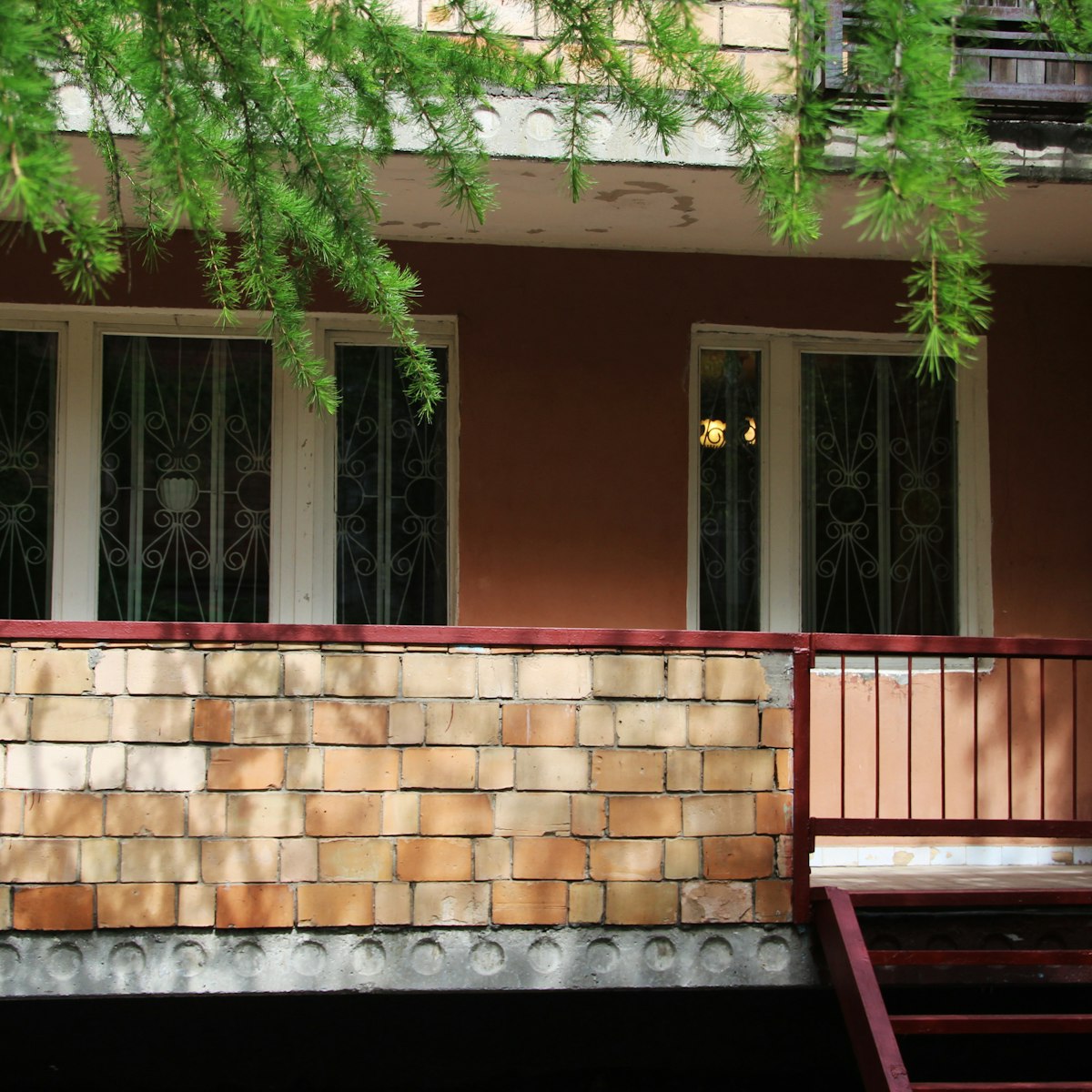
Memorial Apartment of Andrei Sakharov
The nondescript flat where dissident scientist Andrei Sakharov, father of Russia's hydrogen bomb, spent seven years in exile after protesting the 1979…
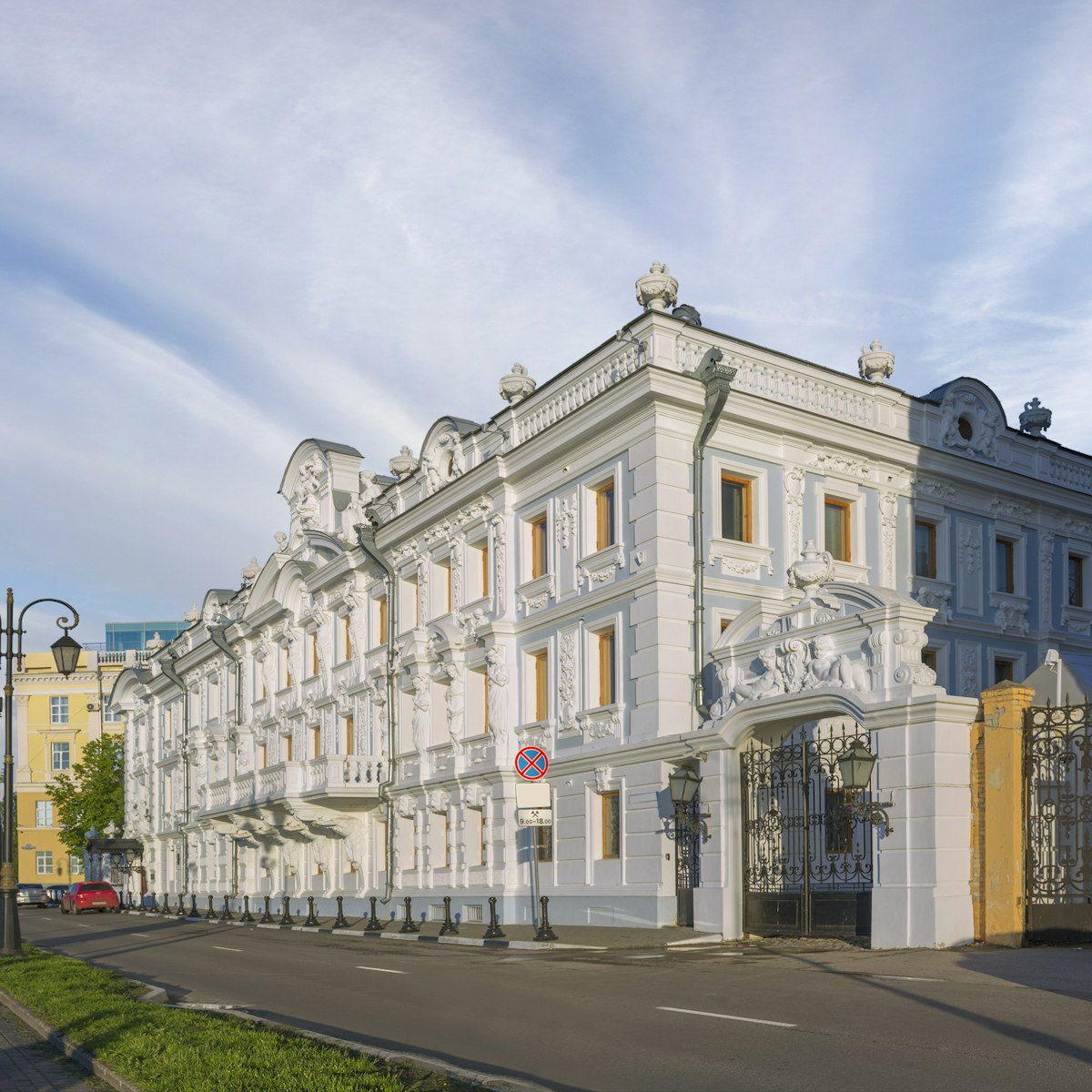
Rukavishnikov Mansion
This exhibition space is located inside a 19th-century mansion once belonging to the Rukavishnikov merchant family. You can wander through the rooms on…
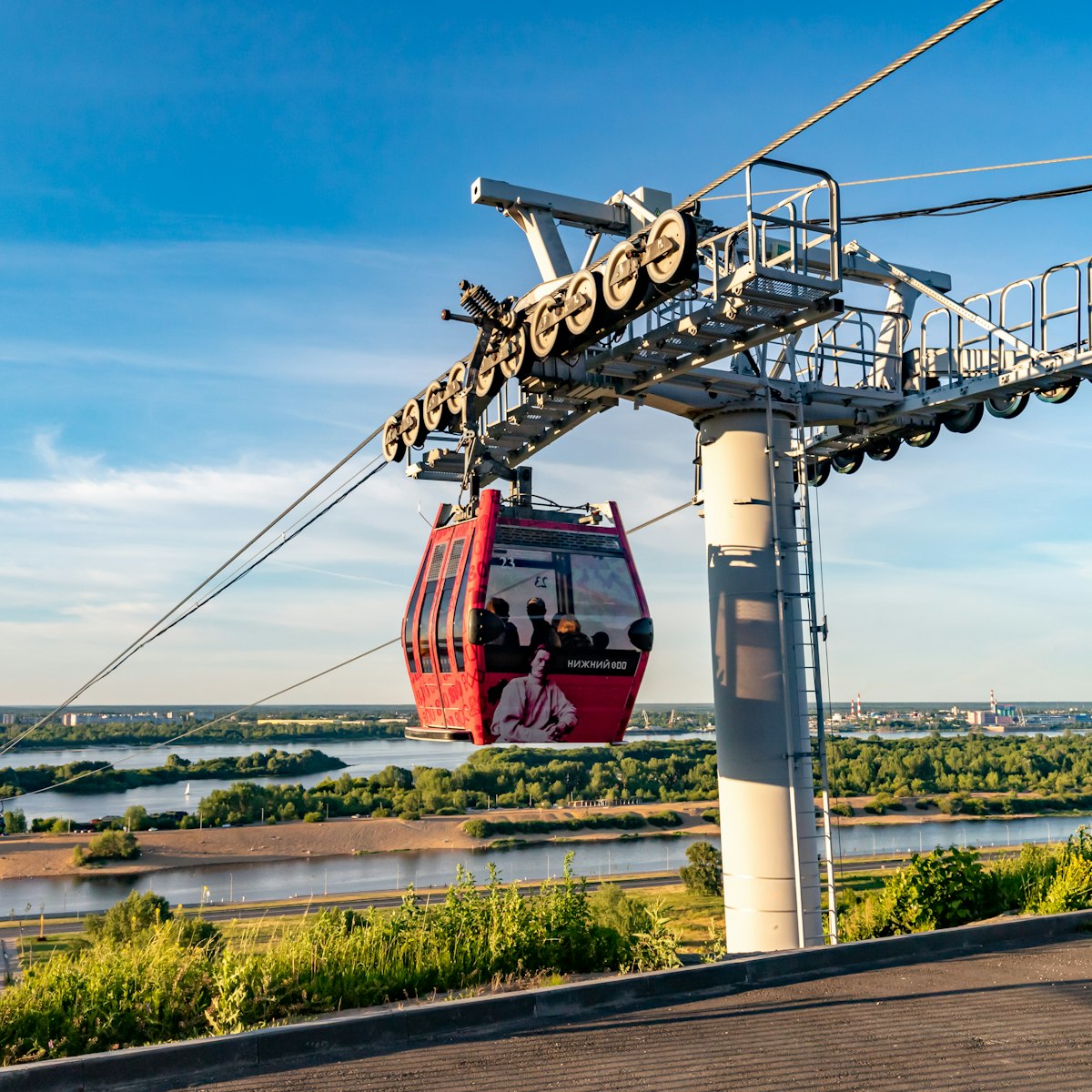
Connecting Nizhny Novgorod with the unattractive settlement of Bor across the Volga, this cable car offers a spectacular 13-minute ride. In winter there…

Arsenal/National Centre of Contemporary Art
Situated in the former kremlin arsenal, on the right after you enter the main gate, this top-ranking national gallery has changing exhibitions of…

Nizhegorodsky State Art Museum
The former governor’s house inside the kremlin houses the Russian collection of the vast Nizhegorodsky State Art Museum. Exhibits range from 14th-century…

Western European Art Collection
The Nizhegorodsky State Art Museum's collection of Western European art is exhibited a short walk from the kremlin along Verkhne-Volzhskaya nab, an…

Pechersky Monastery
This 17th-century monastery, overlooking the Volga, is perfect for a tranquil stroll in small but picturesque grounds. It's located about 500m east of the…
Latest stories from Nizhny Novgorod
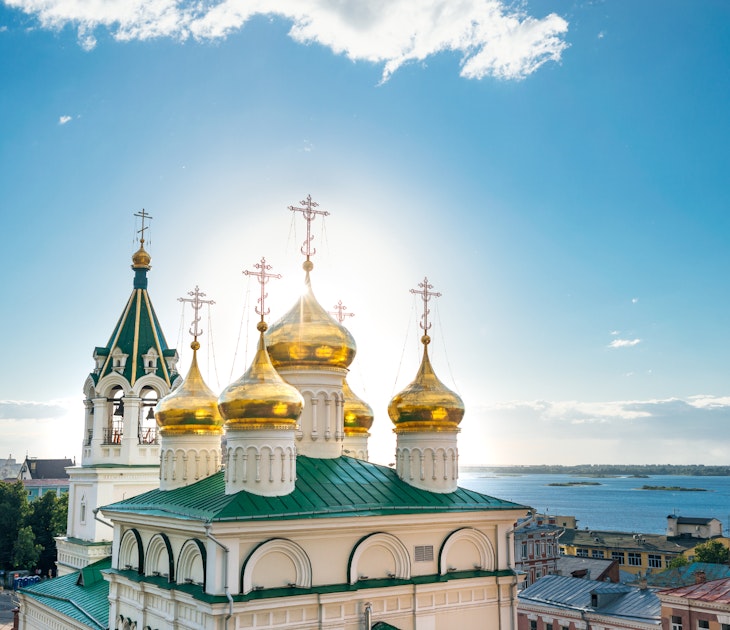
Jul 21, 2017 • 5 min read
The Volga, at 3530km in length, is not only one of Russia’s longest rivers but plays an outsized role in Russian history as well. It was the main conduit…
in partnership with getyourguide
Book popular activities in Nizhny Novgorod
Purchase our award-winning guidebooks.
Get to the heart of Nizhny Novgorod with one of our in-depth, award-winning guidebooks, covering maps, itineraries, and expert guidance.

- Visit Our Blog about Russia to know more about Russian sights, history
- Check out our Russian cities and regions guides
- Follow us on Twitter and Facebook to better understand Russia
- Info about getting Russian visa , the main airports , how to rent an apartment
- Our Expert answers your questions about Russia, some tips about sending flowers

Russian regions
- Bashkortostan republic
- Chuvashia republic
- Kirov oblast
- Mari El republic
- Mordovia republic
- Nizhegorodskaya oblast
- Orenburg oblast
- Penza oblast
- Samara oblast
- Saratov oblast
- Tatarstan republic
- Udmurt republic
- Ulyanovsk oblast
- Map of Russia
- All cities and regions
- Blog about Russia
- News from Russia
- How to get a visa
- Flights to Russia
- Russian hotels
- Renting apartments
- Russian currency
- FIFA World Cup 2018
- Submit an article
- Flowers to Russia
- Ask our Expert
Nizhny Novgorod city, Russia
The capital city of Nizhegorodskaya oblast .
Nizhny Novgorod - Overview
Nizhny Novgorod (colloquially often just “Nizhny”; from 1932 to 1990 - Gorky) is a large city located in the center of European Russia, the administrative center of the Volga Federal District and Nizhny Novgorod Oblast.
It is an important economic, industrial, scientific, educational, and cultural center of Russia, the largest transport hub of the Volga Federal District. Nizhny Novgorod is one of the main centers of river tourism in Russia. The historic part of the city is rich in sights and is a popular tourist destination.
The population of Nizhny Novgorod is about 1,234,000 (2022), the area - 411 sq. km.
The phone code - +7 831, the postal codes - 603000-603257.
Nizhny Novgorod city flag
Nizhny novgorod city coat of arms.
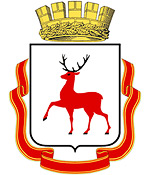
Nizhny Novgorod city map, Russia
Nizhny novgorod city latest news and posts from our blog:.
7 January, 2022 / Nikolai Bugrov's Summer Dacha in Volodarsk .
4 December, 2017 / Stadiums and Matches of the World Cup 2018 in Russia .
2 June, 2017 / The Most Beautiful House in Nizhny Novgorod .
13 March, 2016 / Official Look of Host Cities of World Cup 2018 in Russia .
29 September, 2015 / Nizhny Novgorod - the view from above .
More posts..
History of Nizhny Novgorod
Foundation of nizhny novgorod.
During the military campaigns of the Russian princes against the Volga Bulgaria, the place where the Oka River flows into the Volga was used as a gathering point for the Murom and Suzdal troops. In 1220, Grand Duke Yuri Vsevolodovich (the grandson of Prince Yuri Dolgoruky, the founder of Moscow) conducted a successful campaign against the Bulgars. After it, he “decided to strengthen this important place for Rus” and founded a town at the mouth of the Oka.
It was named Novgorod, which literally means “new town”. Later, the adjective “nizhny” (“lower”) was added to the name of the town in the Russian annals. This was probably done in order to distinguish it from the town of Novgorod (present Veliky Novgorod) and other Novgorods that existed at that time.
The founding of Nizhny Novgorod was the beginning of an active expansion of Russian influence in the Mordovian lands. Two white-stone churches were built in the fortress, including the Cathedral of the Archangel (1227) - evidence of the special role that the town had in the system of lands of Vladimir-Suzdal Rus. However, the Mongol invasion stopped further development.
Information about Nizhny Novgorod of the 13th century is extremely scarce. But it is known that after the invasion it revived relatively quickly. Nizhny Novgorod is constantly mentioned in Russian chronicles as a major political and economic center of North-Eastern Rus and a spiritual center of Orthodoxy in the Volga region. The town was often the object of conflicts between Moscow and Tver.
In 1392, the Moscow prince Vasily I received a jarlig for the Nizhny Novgorod Principality and captured Nizhny Novgorod. The final annexation of Nizhny Novgorod to the possessions of Moscow took place in the late 1440s.
More Historical Facts…
Nizhny Novgorod in the 16th-18th centuries
Under Ivan III and Vasily III, the town played the role of a border post and was a gathering place for military campaigns against the Kazan Khanate. In 1508-1515, the stone kremlin was built. After the capture of Kazan by Ivan the Terrible, the border role of Nizhny Novgorod became insignificant. At the same time, Nizhny Novgorod became the center of trade between Russia and the East and a large shipbuilding center.
In September 1611, during the Time of Troubles, the Second People’s Militia was organized in Nizhny Novgorod to fight the Poles who were able to establish control over Moscow. The militia consisted of detachments of townspeople, peasants of the central and northern regions of the Tsardom of Russia. The leaders were the Nizhny Novgorod merchant Kuzma Minin and Prince Dmitry Pozharsky (the monument to them is installed on Red Square in Moscow). In October 1612, the militia was able to completely liberate Moscow.
In the 17th century, a schism occurred in the Orthodox Church under Patriarch Nikon. It led to the formation of numerous settlements of Old Believers in the vicinity of Nizhny Novgorod. In 1695, during his Azov campaign, Peter I arrived in Nizhny Novgorod. In 1719, as a result of his administrative-territorial reforms, the town became the center of a separate Nizhny Novgorod Governorate. In 1722, setting off on the Persian campaign, Nizhny Novgorod was again visited by Peter I. Here he celebrated his 50th birthday.
In 1767, Nizhny Novgorod was visited by Empress Catherine II. During her stay in the town, she met the famous local mechanic and inventor Ivan Kulibin. After her visit, a new regular town plan was approved. The first town theater was built in 1798. Later, it became known as Nikolaevsky, in honor of Emperor Nicholas I.
Nizhny Novgorod in the 19th century
At the turn of the 18th and 19th centuries, Nizhny Novgorod became a major scientific and cultural center of the Russian Empire. In 1811, the population of Nizhny Novgorod was about 14,400 people. In 1817, the Makaryev Fair, the largest fair of the Russian Empire, was moved to the village of Kunavino (one of the districts of today’s Nizhny Novgorod). Before that, it was organized every year near the Makaryevsky Monastery, which burned down a year earlier. From that time on, it began to be called the Nizhny Novgorod Fair. Thanks to it, the rapid economic development of the town and adjacent villages began.
After Emperor Nicholas I visited the town in 1834, the large-scale reconstruction of Nizhny Novgorod began. In 1847, a water supply system appeared in the town and the first fountain was built. Private buildings in the Nizhny Novgorod Kremlin were demolished and new administrative buildings appeared in their place. A lot of new buildings, streets, boulevards, and gardens were built.
In 1849, a large industrial enterprise was founded in the village of Sormovo (another district of today’s Nizhny Novgorod). Later, it became known as the Sormovo plant. It was producing river steamers, various railway cars, steam locomotives, and trams. Thanks to the plant, Sormovo soon turned into a large village of workers. In 1862, the construction of the Moscow-Nizhny Novgorod railway was completed. In 1863, the population of the city was 41,500 people.
In 1896, the city hosted the All-Russian Trade and Industrial Exhibition. The radio receiver of the engineer A.S. Popov, the hyperboloid tower of the engineer V.G. Shukhov were demonstrated at the exhibition, as well as the first Russian car of the Frese and Yakovlev factories.
Nizhny Novgorod in the first half of the 20th century
In 1914, about 111,000 people lived in Nizhny Novgorod. In 1917, during the First World War, the Warsaw Polytechnic Institute was evacuated to this city, on the basis of which the Nizhny Novgorod Polytechnic Institute was created.
On October 7, 1932, Nizhny Novgorod was renamed Gorky due to the 40th anniversary of the literary and social activities of the writer Maxim Gorky. In 1933, the first permanent bridge across the Oka River was built. The railway bridge across the Volga was constructed too. Thanks to this, it became possible to go by rail through Gorky to the Urals and Siberia.
The 1930s were a period of rapid industrialization. In 1932, the largest industrial enterprise in the city was opened - the Gorky Automobile Plant (GAZ), an important object of the Soviet defense industry. In the 1930s-1940s, the city was even referred to as “Russian Detroit”. By 1939, the population of Nizhny Novgorod increased to about 644,000 people.
Every fourth resident of the Gorky region (about 822 thousand people) fought on the fronts of the Second World War. Of these, more than 350 thousand people did not return from the battlefields - they were killed, went missing or died from wounds in hospitals.
In June 1943, three large raids of German bombers were carried out on Gorky. The main target of air strikes was the Gorky Automobile Plant, which as a result was almost completely destroyed. It was rebuilt only in the middle of 1944. Over 500,000 wounded were treated in dozens of hospitals during the war years.
The city was an important center for the production of weapons. During the Second World War, every second Soviet car, every third tank and every fourth artillery piece were produced at Gorky’s plants. In total, about 38 thousand tanks, self-propelled guns, armored vehicles, 43 thousand mortars, 16 thousand aircraft, 22 submarines, 109 thousand cars, more than 85 thousand radio stations, as well as 101 thousand artillery pieces and 1,165 Katyusha multiple rocket launchers were produced in Gorky.
Nizhny Novgorod after the Second World War
In 1946, the first GAZ-M-20 “Pobeda” passenger car and the GAZ-51 truck left the assembly line of the Gorky Automobile Plant. In 1949, the construction of the monumental Chkalov Stairs connecting the Upper Volga and Lower Volga embankments was completed in the historic center of Nizhny Novgorod. On August 4, 1959, the resolution of the Council of Ministers of the USSR “On the closure of the city of Gorky for visiting by foreigners” was issued. In 1962, the population of Gorky exceeded 1 million people.
On January 18, 1970, a radiation accident occurred at the Krasnoe Sormovo plant. During the construction of a nuclear submarine, an unauthorized launch of the reactor took place. After working at prohibitive power for about 10-15 seconds, it partially collapsed. Hundreds of workers were exposed to the radioactive release. In total, over one thousand people took part in the liquidation of the consequences of the accident and were exposed to radiation.
In 1985, a subway was opened in Gorky. In 1980-1986, Andrei Sakharov, a world famous nuclear physicist, Nobel laureate, and activist, was in exile in Gorky to prevent his contacts with foreigners. In the early 1990s, the “closed city” status was lifted and the city became accessible to foreigners. On October 22, 1990, Gorky was renamed back to Nizhny Novgorod. In 1991, the population of the city reached its maximum - 1,445,000 people.
At the end of the 20th century, the information technology sphere began to actively develop in the city. In the 2000s, a transport problem arose because of the insufficient carrying capacity of the Nizhny Novgorod bridges connecting the lower part of the city and the upper one.
In February 2012, the Nizhny Novgorod Volga Aerial Tramway was opened. This 3661-meter-long gondola lift cable car connected Nizhny Novgorod with the town of Bor. Its daily passenger traffic is about 5,000 people. In 2013, the city electric train was launched - an alternative to the subway line from Sormovo to Moskovsky railway station.
Nizhny Novgorod hosted 6 matches of the FIFA World Cup 2018 . A new stadium was built, the old river port was demolished, a new park and embankments were created. Large-scale restoration of old streets and buildings took place, new museums were opened, hotels were built, and parks were reconstructed.
Streets of Nizhny Novgorod
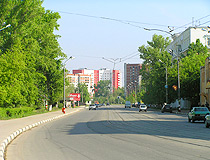
One sunny summer day in Nizhniy Novgorod
Author: Denis Plekhanov
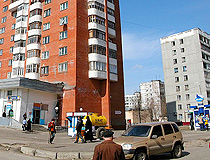
Apartment buildings in Nizhny Novgorod
Author: Eugene Ivanov
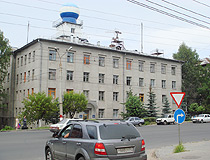
On the street in Nizhny Novgorod
Author: Sergey S. Kazenyuk
Nizhny Novgorod - Features
Nizhny Novgorod is located about 425 km east of Moscow, at the confluence of the two largest waterways of the European part of Russia - the Volga and Oka rivers. The city is divided by the Oka into two parts. The length of Nizhny Novgorod along the Oka is 20 km, along the Volga - about 30 km.
The climate in Nizhny Novgorod is moderately continental, with cold, long winters and warm, relatively short summers. The average temperature in January is minus 8.9 degrees Celsius, in July - plus 19.4 degrees Celsius.
A red deer is depicted on the coat of arms and flag of Nizhny Novgorod, which is a symbol of nobility, purity, life, wisdom, and justice. The City Day is celebrated on the 3rd Saturday in August.
In January 2019, Nizhny Novgorod was recognized as the best city in Russia in terms of quality of life. It took first place among Russian cities and 109th in the world in terms of quality of life. The rating was compiled by the site numbeo.com, which specializes in statistics on the cost of living and consumer prices in different countries of the world.
When compiling the rating, the purchasing power of the population, safety, health care, the cost of living, the ratio of real estate prices to the population’s income, traffic congestion, the level of environmental pollution, and climate were taken into account.
The main branches of the local industry are the production of cars and weapons, shipbuilding. Nizhny Novgorod is also one of the IT centers of Russia.
Nizhny Novgorod is a major transport hub. The city has a railway station, a river station, a cargo port, several berths for transshipment of goods. Strigino International Airport named after V.P. Chkalov offers regular flights to such cities as Yekaterinburg, Kazan, Kaliningrad, Moscow, Novosibirsk, Samara, St. Petersburg, Sochi, and a number of others.
Public transport in Nizhny Novgorod plays a very important role in ensuring the life of the city. At the same time, its work is hampered by the distribution of its population on the city’s territory, large daily migrations, a very high concentration of passenger traffic on the bridges across the Oka River, and the lack of an all-encompassing system of high-speed transport. There are municipal buses, fixed-route minibuses, trams, trolleybuses, the city train, and subway.
The tourist potential of Nizhny Novgorod is quite high. According to UNESCO, it is one of the most valuable historical cities in the world. In total, there are more than 600 unique historical, architectural and cultural monuments in Nizhny Novgorod, a variety of museums. The best time to visit Nizhny Novgorod is summer.
One of the alternative ways to visit Nizhny Novgorod is to take a river cruise along the Volga River. Travelers will find exciting excursions and meals in traditional Russian taverns. It will also be interesting to come during one of the many fairs or ethnographic festivals that are held in the city.
Main Attractions of Nizhny Novgorod
Nizhny Novgorod Kremlin (1508-1515) - a fortress in the historic center of Nizhny Novgorod and its oldest part, the main architectural complex of the city located on the right high bank, at the confluence of the Volga and Oka rivers. To date, all 13 towers of the Nizhny Novgorod Kremlin have been preserved or have been restored. The thickness of the wall at the base reaches 5 meters. There are exhibitions in the towers of the fortress; a section of the wall is open for tourists to visit.
In the past, there were several churches on the territory of the Nizhny Novgorod Kremlin. Today, only the Archangel Michael Cathedral has survived, built no later than the middle of the 16th century and rebuilt in 1628-1631 - the oldest surviving building in the kremlin. There is the grave of Kuzma Minin inside it.
An excellent view of the Volga River and Strelka (the confluence of the Oka and Volga) opens from the walls of the Nizhny Novgorod Kremlin. Here you can also see a collection of military equipment from the Second World War.
Nizhny Novgorod State Art Museum - one of the oldest museums in Russia, the largest museum of fine arts in the Nizhny Novgorod region. The Governor’s Palace on the territory of the Nizhny Novgorod Kremlin houses a permanent exhibition of Russian art and a collection of artistic silver.
In the House of the Merchant and Benefactor D.V. Sirotkin (Verkhnevolzhskaya Embankment, 3), an exposition of Western European art is presented and, separately, the painting by K.E. Makovsky “The appeal of Kuzma Minin to the citizens of Nizhny Novgorod” - one of the largest paintings on a historical theme in Russia (698x594 cm).
Chkalov Stairs (1943-1949) - a monumental staircase in the form of a figure eight in the historic center of Nizhny Novgorod. Connecting the Upper Volga (Verkhnevolzhskaya) and Lower Volga (Nizhnevolzhskaya) embankments, it is one of the longest stairs in Russia. It starts from the observation deck at the monument to Valery Chkalov (the famous Soviet pilot who made the first non-stop flight from the USSR to the USA via the North Pole), next to the St. George Tower of the Nizhny Novgorod Kremlin.
Bolshaya Pokrovskaya Street - the main street of Nizhny Novgorod built up with noble mansions of the past centuries. A large part of Bolshaya Pokrovskaya is reserved for the pedestrian zone and is analogous to the pedestrian Arbat Street in Moscow. There are a lot of historic houses, cafes, souvenir shops, boutiques, monuments, and sculptures here. The length of the street is over 2 km.
The building of the State Bank (Bolshaya Pokrovskaya Street, 26), resembling a medieval palace, is an outstanding architectural monument built in the Russian Revival style in 1911-1913. In the Museum of Old Equipment and Tools (Bolshaya Pokrovskaya Street, 43), you can see unique exhibits, hear their history, and even touch them.
Fedorovsky Embankment - one of the most beautiful embankments in Nizhny Novgorod and the best observation deck in the city. Everything is perfectly visible from this embankment: the old part of the city, the river station with a park, the Kanavinsky bridge - one of the oldest in the city, and, of course, the opposite bank of the Oka River with the Alexander Nevsky Cathedral, the confluence of the Oka and Volga. People also come here to watch the sunset.
Nizhny Novgorod Volga Aerial Tramway . This cable car, 3661 meters long, connects the high right bank of the Volga River, where the historic part of Nizhny Novgorod is located, with the town of Bor. It has the largest unsupported span over the water surface in Europe - 861 meters.
A one way trip during which you can admire the picturesque views of Nizhny Novgorod and the Volga River takes 15 minutes. It is better to use it in good sunny weather, because in windy weather, the movement of the cabins can be stopped. Sennaya Square on Kazanskaya Embankment.
Nizhny Novgorod State Museum of History and Architecture (1875-1877). Also known as the Mansion of S.M. Rukavishnikov, it is an architectural ensemble built in the eclectic style in the historic center of Nizhny Novgorod, one of the most important and famous architectural monuments of this city. Guided tours are held in the premises, allowing you to learn about the life of the former owners of the mansion, as well as look at the historical expositions of different years. Verkhnevolzhskaya Embankment, 7.
Main Palace of Nizhny Novgorod Fair - a luxurious building constructed in the forms of Old Russian architecture of the 17th century. Today, exhibitions of various formats are held here, as well as the multimedia exposition “Russia - my history” dedicated mainly to the history of Nizhny Novgorod starting from the Finno-Ugric peoples. Sovnarkomovskaya Street, 13.
Museum of the History of the Gorky Automobile Plant . The museum houses expositions telling about the history and development of the Gorky Automobile Plant. In total, there are over 40,000 exhibits. Here you can see a collection of Soviet vintage cars, which includes “Chaika”, “Volga”, the truck “GAZ-51”, and a lot of others. Lenina Avenue, 95.
Alexander Nevsky Cathedral (1868-1881) - the most noticeable sight of the lower part of Nizhny Novgorod, which can be seen from all observation decks of the upper city. The church, 87 meters high, was built on the site of the Nizhny Novgorod Fair at the expense of merchants, who wanted to perpetuate the visit of Emperor Alexander II. Strelka Street, 3a.
Church of the Nativity of the Blessed Virgin Mary (1696-1719) - one of the best examples of the Stroganov Baroque, an architectural monument of federal significance. From a distance, this colorful building looks like a sugar gingerbread with “candy” domes and decorated with stone flowers, pears and apples. Rozhdestvenskaya Street, 34.
Pechersky Ascension Monastery - one of the most interesting places in Nizhny Novgorod, where you can feel the spirit of the city. Most of the monastery buildings date back to the first half of the 17th century. A lot of beautiful photographs can be taken here. Privolzhskaya Sloboda Street, 108.
Limpopo Zoo - the first private zoo in Russia. More than 270 species of animals live here, 25 of which are listed in the Red Book of the Russian Federation. It is located on the territory of the Sormovsky Park on an area of 7.1 hectares. Yaroshenko Street, 7b.
Architectural and Ethnographic Museum-Reserve “Shcholokovskiy Khutor” . The exposition of this museum is represented by 16 objects of rural architecture: residential houses, barns, mills and churches of the 17th-19th centuries brought from the northern districts of the Nizhny Novgorod region. The facades of the houses are decorated with traditional relief carvings. In the premises of the houses, interiors with authentic items of peasant life have been restored. Gorbatovskaya Street, 41.
Nizhny Novgorod city of Russia photos
Pictures of nizhny novgorod.
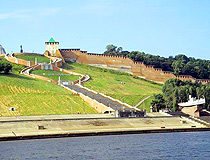
Chkalov Stairs and the Nizhny Novgorod Kremlin
Author: Sergey Bulanov
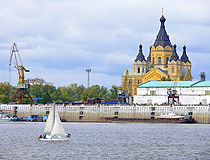
Alexander Nevsky Cathedral in Nizhny Novgorod
Author: Evgeniy Balashov
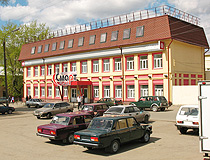
Shopping and office center Smart in Nizhny Novgorod
Author: Diman Lazarev
Sights of Nizhny Novgorod
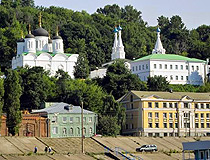
Annunciation Monastery - the oldest monastery in Nizhny Novgorod
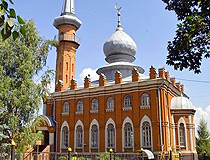
Nizhny Novgorod Cathedral Mosque
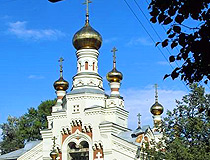
Church in honor of the icon of the Mother of God Joy of All Who Sorrow in Nizhny Novgorod
The comments of our visitors
- Currently 3.14/5
Rating: 3.1 /5 (250 votes cast)
Sponsored Links:
- Trip Planner
- Private Tours
- Small Group Tours
- Two Capitals
- City Breaks
- Trans-Siberian
- River Cruises
- Russia & Beyond
4-star edition of the private 9-day tour of the Russian capitals
5-star edition fo the private 9-day tour of Moscow & St. Petersburg
13-day in-depth discovery of Moscow, Kazan, and St. Petersburg
7-day tour designed to harness the best of the Venice of the North
11-day private discovery of Moscow, St. Petersburg, and the Golden Ring
Your Russia Getaway
Fill out the short trip survey to receive a personalized itinerary from a destination expert.
- Travel guide
- Before you go
- What to see
Russia Trip Planner
Learn about the dos and the don'ts for your amazing trip to Russia
- Our Partners
- Reservation Policies
Rated 9/10 on the Trustpilot review platform
- My itineraries
- Chat with us
- Trip survey
Groups & Agents
- For Suppliers
+1 (888) 744-6056
- North America : +1 (888) 744-6056
- Oceania and Australia : +61261888118
Nizhny Novgorod, Russia
You are here, about nizhny novgorod.
If you are still wondering, whether Nizhny Novgorod travel would be something you'd like to experience, let us help you - it would. This colorful Russian city full of cultural heritage might exceed your expectations since it has something to offer for everyone.
Reasons to Travel to Nizhny Novgorod
Art enthusiasts will surely enjoy the State Gorky Literature Museum which was named after the great Russian author Maxim Gorky. Bet you didn't know that Nizhny Novgorod was his birthplace? Do not worry, now you do.
There are also multiple art galleries and installations such as The Blogger's Bench which provides free Wi-Fi access if you are in the mood of blogging about your experience.
The musician community will not be disappointed as well, as the city has multiple live music bars and cafes open for the public and is often the place where great concerts are staged. If you are not that into art, there are plenty of other places worth putting on your Nizhny Novgorod itinerary, f.e., the grand red-brick Kremlin.
The Cathedral of Archangel Michael, which is actually the only church that has stood the test of time in Kremlin, along with multiple ancient towers is what makes this site a must-see. By the way, the magnificent church of St. Elijah is right around the corner, so make sure to make a little detour during your Nizhny Novgorod tour after seeing the Kremlin.
Another thing you should not miss during your Nizhny Novgorod sightseeing is the panorama of Strelka, overlooking the amazing view of the confluence of the rivers Oka and Volga and also the Fedorovsky Embankment, a perfect place for a stroll in the evening.
If you want to take a look at the scene from a different angle, hop on a boat trip along the two rivers! Nowadays Nizhny Novgorod is the fifth-largest city in the Russian Federation, somehow managing to maintain the unique heritage alongside its cultural versatility, thus looking at pictures is not enough, feel like exploring it yourself?
Best Things to Do in Nizhny Novgorod
- Witness the ancient Novgorod Kremlin
- Get inspired by the scenic panoramas of the Volga River
- Explore diverse museums of Nizhny Novgorod
More About Nizhny Novgorod
- Call us now
- Request a call
- Chat on WhatsApp
- Start Live chat
- Contact via email

Moscow & St. Petersburg Small Group Tours Private Tour Packages Trans-Siberian Trips Russian River Cruises Moscow Tour Packages St. Petersburg Tours All Russia Tours
Why Travel to Russia Best Time to Visit Russia Russian Visa Information Tips Before Traveling Tips on Arrival Russian Currency Moscow Travel Guide Read More in Our Blog
Hermitage Museum Church of the Savior on Blood The Kremlin Sergiev Posad, Golden Ring Kizhi Island The Red Square Siberia Lake Baikal
Fla. Seller of Travel Ref. No. ST39939 All Rights Reserved © 2024 About Us | Testimonials | Our Blog | Terms of Service | Privacy Policy
Southwest cancels nonstop route from Austin to Cozumel. When is your last chance to book?
If you want to travel from Austin to Cozumel, you'd better act fast.
Southwest Airlines announced Thursday that it will cease service to Cozumel International Airport in August, meaning Austin-Bergstrom International Airport will lose yet another nonstop route.
Safety: FAA taps Austin airport for safety improvements following spate of near-misses last year
The change is expected to take effect Aug. 4. The last nonstop flight from the Austin airport to the island in Quintana Roo, Mexico, appears to be at 11:30 a.m. July 27. As of Friday afternoon, tickets for that flight cost $248 to $368.
Southwest's announcement came alongside its 2024 first-quarter financial report, which showed the company endured a net loss of $231 million. The airline is also planning to cancel service to Bellingham International Airport in Washington, George Bush Intercontinental Airport in Houston and Syracuse (N.Y.) Hancock International Airport.
Eclipse: See stunning photos from solar eclipse flight from Austin to Detroit
"To improve our financial performance, we have intensified our network optimization efforts to address underperforming markets," Southwest President and CEO Bob Jordan said in a statement. "We are focused on achieving our financial prosperity goals and creating value for our shareholders, while we adjust to changes in our aircraft delivery plans, customer travel patterns and preferences, higher fuel prices and other cost pressures."
Airport leadership: Austin appoints airport CEO, ending yearlong period of temporary leadership

IMAGES
COMMENTS
5 offers from $1.28. #10. Yorkshire Dales: Local, characterful guides to Britain's Special Places (Bradt Travel Guides (Slow Travel series)) Mike Bagshaw. 9. Kindle Edition. 1 offer from $14.15. #11. Gentleman Jack: A biography of Anne Lister, Regency Landowner, Seducer and Secret Diarist.
Read more about the best time to visit the UK in my detailed guide. There are a number of festivals and events held in Yorkshire during the year including. Yorkshire Dales Food & Drink Festival 21st/22nd/23rd July 202 3. Tramlines - 3 day music festival in Sheffield 21/22/23 July 202 3. Whitby Goth Weekend 28/29/30 April 2023 & 27/28/29 Oct 2023.
ISBN: 9781789197112. Series: Rough Guides Main Series. Publication Date: 12/14/2021. Pages: 328. Dimensions: 129 x 198mm. Discover the Rough Guide to Yorkshire, a comprehensive and entertaining travel guide that comes complete with a free eBook and detailed maps.
The Rough Guide to Yorkshire (Travel Guide with Free eBook) (Rough Guides Main Series) £12.16. (91) In stock. The Rough Guide to Yorkshire is the first comprehensive guidebook to England's largest county. It includes comprehensive coverage of the county, from the ruggedly beautiful Dales and Moors and magnificent North Sea coast, historic York ...
The Rough Guide to Yorkshire Make the most of your time on Earth with the ultimate travel guides. World-renowned 'tell it like it is' travel guide, now with free eBook. Discover Yorkshire with this comprehensive and entertaining travel guide, packed with practical information and honest recommendations by our independent experts.
Features interesting and unusual places not found in traditional travel guides ; Part of the international 111 Places series with over 650 titles and 3.8 million copies in print worldwide; Appeals to both the local market (more than 5.3 million people call Yorkshire home) and the tourist market (more than 1.3 million people visit Yorkshire ...
Rough Guides® is a trademark owned by Apa Group with its headquarters at 7 Bell Yard London WC2A 2JR, United Kingdom. Plan your visit to Yorkshire, England: find out where to go and what to do in Yorkshire with Rough Guides. Read about itineraries, activities, places to stay and travel essentials and get inspiration from the blog in the best ...
Yorkshire. England, Europe. With a population as big as Scotland's and an area half the size of Belgium, Yorkshire is almost a country in itself. It has its own flag, its own dialect and its own celebration, Yorkshire Day (1 August). Best Things to Do.
Yorkshire is typically warm, and it often rains in the summer. It can be cold in the winter, so the best time to visit Yorkshire is between April and October. Springtime is beautiful, as the Yorkshire Dales are dotted with baby lambs, spring flowers burst forth, and trees are heavy with blossom. Related: Where to spot bluebell woods and the ...
The Rough Guide to Yorkshire Make the most of your time on Earth with the ultimate travel guides. World-renowned 'tell it like it is' travel guide, now with free eBook. Discover Yorkshire with this comprehensive and entertaining travel guide, packed with practical information and honest recommendations by our independent experts.
Visit Ripon (medieval city and cathedral) Visit Staithes (a quaint traditional fishing village with the narrowest street in the north of England. Visit the thriving market town of Skipton. Explore magnificent castles. Skipton Castle - the most complete inhabited castle in the North of England.
Option 1 - By car. York is located 200 miles to the north of London. Plan at least 4 hours to drive between the 2 cities (this will vary depending on traffic but it can be a busy route). Other English cities you will pass along the way are Leicester, Nottingham, Sheffield and Leeds.
The best UK travel books for 2023 and beyond from Lonely Planet, Rick Steves, Rough Guide all in one handy guide. Click to read more! ... Best things to do in Whitby Yorkshire (+ travel tips & map) 8 Beautiful Scottish castle hotels (Special stays 2022) Hello from both of us - Tracy and Doug Collins.
In travel news this week: a gelato ban in Italy, runaway horses in central London, the orange fog that hit Athens and - if you're still feeling brave enough - the best dates and times to ...
Choice Guide to York, U.K.: 2 (Choice Guides to Yorkshire) £5.99. (79) In stock. York has so many great historic sights that you won't have time to see them all. This 2020 guidebook tells you enough about each of York's attractions for you to choose what will suit your tastes. The author lives in York, writes from eyewitness experience ...
On weekdays during lunch time till 15:00 you can get 20% discount on all menu. The Dirigible book store is also worth a visit, having several specialized sections, and in particular a section with souvenirs and literature about Nizhny. The cafe and the book store have branches at 2 Kanavinskaya street near the railway station. 400 руб.
Nizhny Novgorod. Russia, Europe. Russia's fifth-largest city - sometimes referred to as the country's 'third capital' - would likely go unnoticed by most travellers if not for its arresting hilltop kremlin, overlooking the confluence of two wide rivers: the Volga and Oka. This is the locale where merchant Kuzma Minin and Count Dmitry ...
The historic part of the city is rich in sights and is a popular tourist destination. The population of Nizhny Novgorod is about 1,234,000 (2022), the area - 411 sq. km. The phone code - +7 831, the postal codes - 603000-603257. Local time in Nizhny Novgorod city is April 27, 10:09 am (+3 UTC).
Best Things to Do in Nizhny Novgorod. Witness the ancient Novgorod Kremlin. Get inspired by the scenic panoramas of the Volga River. Explore diverse museums of Nizhny Novgorod. Travel to Russia to see the best attractions of Nizhny Novgorod. Learn more about things to do in Nizhny Novgorod and book your unforgettable trip with us!
Southwest's announcement came alongside its 2024 first-quarter financial report, which showed the company endured a net loss of $231 million. The airline is also planning to cancel service to ...